Are you struggling to make your SaaS business stand out in the crowded digital marketplace? (Problem) SEO for SaaS is the game-changer you need.
In this comprehensive guide, we’ll dive deep into SaaS SEO, revealing why it’s crucial for your business, how it differs from regular SEO, and the step-by-step process to implement it effectively.
By the end, you’ll have a clear roadmap to improve your online visibility, attract high-quality leads, and drive consistent growth for your SaaS business.
Let’s unlock the power of SaaS SEO together!
What is SaaS SEO?
SaaS SEO, or Software as a Service Search Engine Optimization, is a specialized approach to SEO that focuses on optimizing SaaS websites to increase their visibility in search engine results pages (SERPs). The ultimate goal of SaaS SEO is to drive more organic traffic to the website, increase monthly reoccurring revenue (MRR) and conversion (i.e., sign-ups for the software service), and ultimately grow the SaaS business.
How SaaS SEO Differs from Regular SEO
While the fundamental principles of SEO apply to all types of websites, SaaS SEO has some unique aspects that set it apart from regular SEO.
Here are the main differences:
- Target Audience: SaaS companies often have a very specific target audience, such as other businesses (B2B Target Audience) or specific industries. This requires a more targeted SEO approach, focusing on industry-specific keywords and creating content that meets the unique needs of this audience.
- Conversion Goals: Unlike traditional websites where the primary goal might be to drive sales of individual products or services, the objective for SaaS companies is often to increase Monthly Recurring Revenue (MRR). This is achieved by focusing on getting customers to sign up for higher-tiered plans and retaining them for the long term with the right messaging and positioning.
- Content Strategy: SaaS companies often use content marketing as a key part of their SEO strategy. This includes creating high-quality, informative content that helps potential customers understand the benefits of their software and how to use it effectively and move them down the funnel.
- Keyword Strategy: SaaS companies often target long-tail, industry-specific keywords that have lower search volumes but higher conversion rates. This is different from many other types of websites, which may target broader, high-volume keywords.
While, Google and other search engines do not have specific algorithms for SaaS, e-commerce, etc. There are always differences in how you approach your SEO strategy based on your industry.
As they say, the devil is in details, and with SaaS, the key difference are the right keywords that attract the right type of customers that increase your MRR and ARR with long-time customers.
Why is SaaS SEO Important?
SaaS SEO is a critical strategy for SaaS businesses as it helps in enhancing online visibility and it plays a significant role in customer acquisition, revenue generation, and business growth.
With that, here are the top 5 reasons why you should care about SaaS SEO:
Reason #1: One of the Top Acquisition Channel
According to a study by Uplift Content, 29% of companies stated that SEO is one of the best ways to increase revenue for SaaS companies.

Furthermore, Referral Rock reports that 39% of marketers named both content marketing and SEO as their top three most effective strategies.

This correlation makes sense as content marketing and SEO are intertwined, working hand in hand to boost online visibility and attract potential customers and it makes it one of the best SaaS lead generation strategies.
Reason #2: Relatively Affordable
While the cost of implementing an SEO strategy can vary, it’s generally a cost-effective marketing strategy.
Expenses typically range from $1,000 to $10,000, primarily covering aspects like link building, content production, and technical SEO optimization.
This cost excludes the salary of marketing personnel but considering the potential return on investment, it’s a worthwhile expenditure.
Reason #3: One of the Key Digital Marketing Strategies
In the digital marketing landscape, an omnichannel approach is key, and SaaS SEO plays a significant role in this comprehensive digital marketing strategy.
It works synergistically with other digital marketing strategies like Pay-Per-Click (PPC) advertising, remarketing, and social media marketing to deliver optimal results.
For instance, high-performing SEO keywords identified through keyword research can be used in PPC campaigns, while engaging content developed for SEO can be shared on social media platforms to increase reach.
Additionally, you can remarket certain types of audiences that came to your website through SEO to increase your ROAS and overall ROI from both SEO and PPC channels.
Reason #4: SaaS SEO is Long Term Investment That Pays Off
SEO is not a quick fix but a long-term investment. It typically takes between 6 to 18 months to see significant results from SEO efforts, depending on the industry, your budget, and your experience.
However, the effects of SEO are compounding, meaning the benefits increase over time, making it a worthwhile investment.
Moreover, as long as people continue to use search engines to find information, products, and services, SEO will remain a valuable strategy regardless of Google SGE.
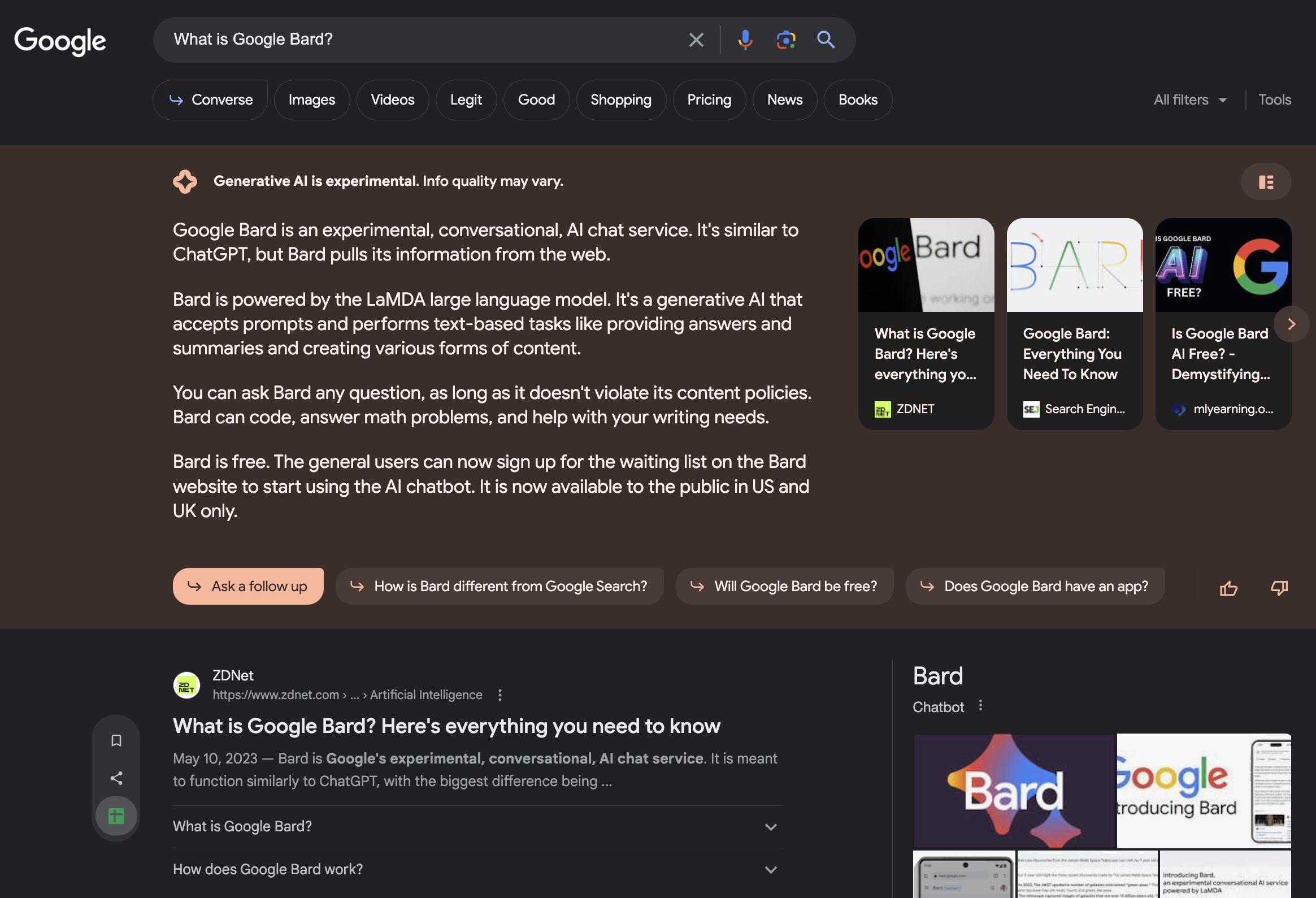
In fact, I believe Google SGE makes SEO even better for lead generation as it allows you to focus on the most important aspects of your content strategy, which is producing content that converts and not so much educating, as now this is handled by AI bots.
Reason #5: SaaS SEO is Highly Scalable
With approximately 8.5 billion searches conducted every day, SEO presents a massive opportunity for SaaS companies to reach a broad audience.
By optimizing your website for search engines, you can tap into this vast market, attracting potential customers who are actively searching for the solutions your software provides.
As your business grows, your SEO efforts can scale alongside it, continually driving traffic and conversions, getting consistently more customers and better quality customers from your SEO investment.
Key Elements of SaaS SEO Strategy
Crafting an effective SaaS SEO strategy involves a comprehensive approach that encompasses various elements.
These elements, often visualized as an SEO pyramid, work together to create a strong foundation for your website’s visibility in search engine results. The key elements of a SaaS SEO strategy include keyword research, on-page SEO, off-page SEO, and technical SEO.
Each of these elements plays a crucial role in ensuring your website is easily discoverable by your target audience. Let’s delve deeper into each of these elements.
Element # 1:Technical SEO
Technical SEO is the backbone of any effective SEO strategy. It involves optimizing the technical aspects of a website to ensure it’s easily crawlable and indexable by search engines. It’s crucial to address technical SEO first as it lays the groundwork for other SEO efforts.
Luckily most of the technical SEO is handled by hosting and theme developers, but there are a few things that you will still need to focus on.
Here are key areas to focus on in technical SEO:
- Page Speed: Page speed is a critical factor in both user experience and SEO. Google’s Core Web Vitals is a set of metrics that measure the speed, responsiveness, and visual stability of a page. Ensuring your website performs well on these metrics can improve your search engine rankings.
- Duplicate Content: Duplicate content can confuse search engines and lead to ranking issues. It’s important to regularly check your website for duplicate content and use canonical tags or 301 redirects to address any issues.
- Website Protection: A secure website is a trustworthy website in the eyes of both users and search engines. Implementing HTTPS (secure HTTP) is a key part of this, ensuring data transmitted between your website and its users is encrypted and secure.
- Mobile-Friendliness: With the majority of web browsing now happening on mobile devices, having a mobile-friendly website is essential. Google uses mobile-first indexing, meaning it primarily uses the mobile version of a website for indexing and ranking.
For all these and more, you can use SE Ranking Website Audit to track and improve all the important technical SEO elements of your website.
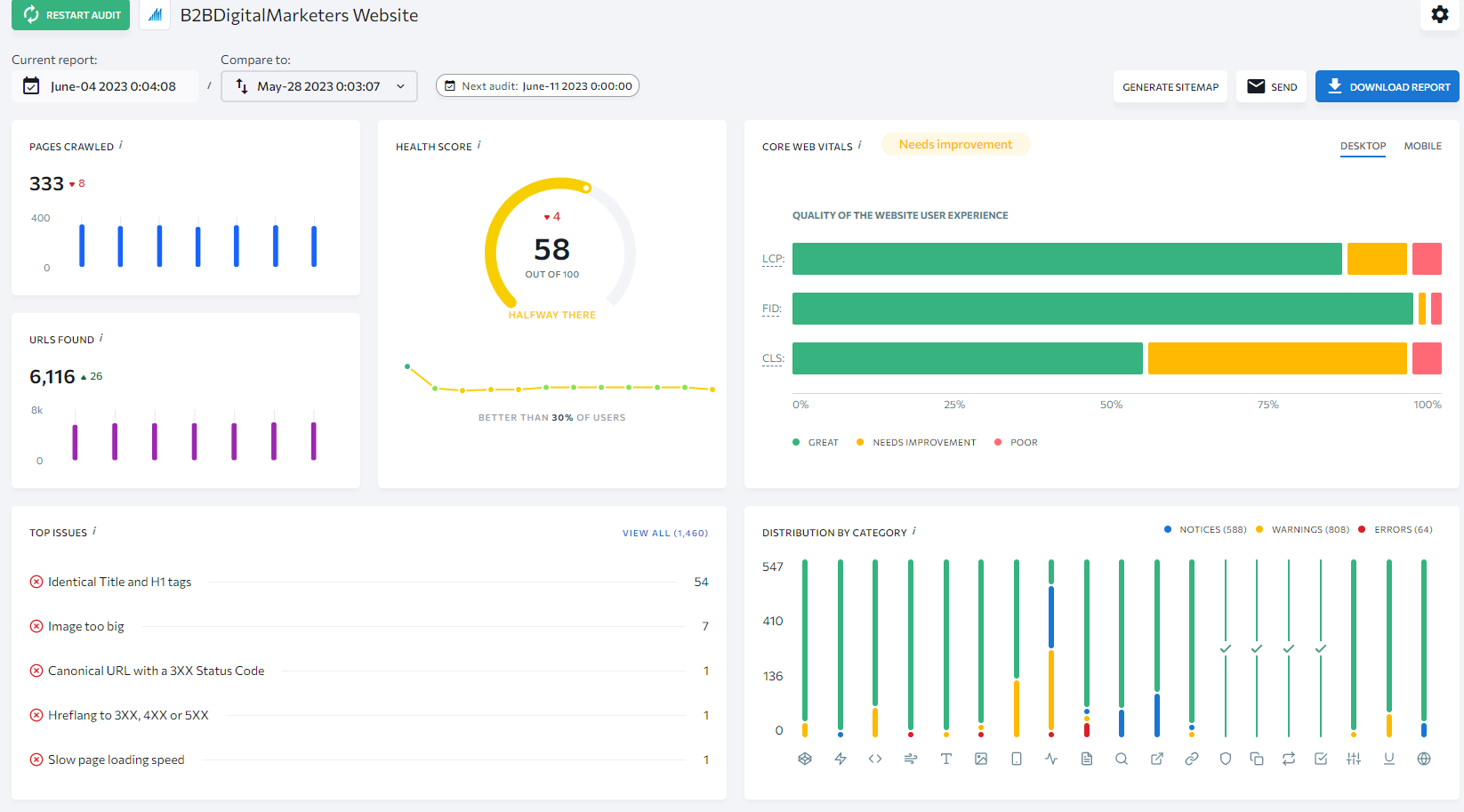
Like this you can build a solid foundation for your SaaS SEO strategy, paving the way for successful on-page and off-page SEO efforts.
Element # 2: Keyword Research
Keyword research is a fundamental aspect of SEO that involves identifying the words and phrases your target audience uses when searching for products or services like yours.
Despite the evolution of SEO, keyword research remains crucial as it informs the content strategy and helps ensure your website is discoverable by the right people.
A key part of keyword research is understanding search intent, which can be categorized into four types:
- Informational Keywords: These are used by people at the top of the funnel who are seeking information. They’re typically question-based or general topic keywords.
- Commercial Keywords: These are middle-of-the-funnel keywords used by people who are considering a purchase and are comparing options.
- Transactional Keywords: These are bottom-of-the-funnel keywords used by people who are ready to make a purchase. They often include words like “buy,” “order,” or “price.”
- Navigational Keywords: These are used by people who are looking for a specific website or page. It’s important to target competitors’ navigational keywords to capture some of their traffic.
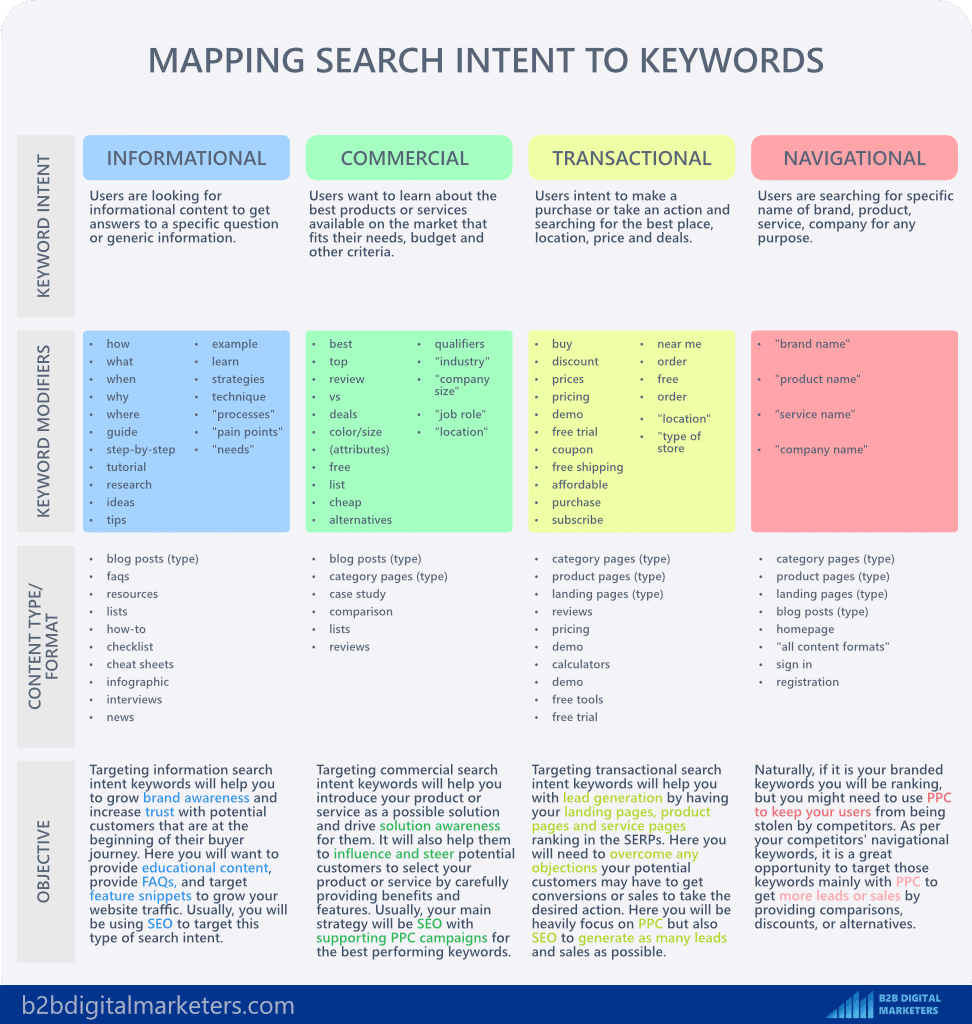
Creating content that targets keywords from all stages of the SEO funnel ensures you’re attracting potential customers at every stage of their buying journey.

This includes primary keywords that directly relate to your product or service, secondary keywords that are related to your primary keywords, and long-tail keywords, which are longer, more specific phrases that often have lower competition and higher conversion rates.
By conducting thorough keyword research and understanding search intent, you can create an SEO strategy that effectively targets your ideal customers and drives more organic traffic to your website.
Element #3: Content Creation
Content creation is the heart of any SEO strategy. It’s where you put your keyword research into action, creating valuable content that targets the keywords your audience is searching for.
For SaaS companies, it’s important to produce a variety of content types to target keywords across all stages of the funnel. This includes product and category pages for transactional keywords, blog posts for informational keywords, and comparison or review pages for commercial keywords.

Building topical authority is another crucial aspect of content creation.
By consistently producing content that targets relevant keywords in your niche or industry, you signal to search engines that your website is a trusted source of information on that topic.
This can improve your website’s rankings and increase its visibility in search results.

For example, a SaaS company offering project management software might create a topic cluster with:
- Product pages detailing the features and benefits of their software (targeting transactional keywords like “buy project management software”).
- Blog posts providing tips on effective project management or how to use their software (targeting informational keywords like “agile project management”).
- Comparison pages comparing their software to competitors (targeting commercial keywords like “best project management software”).
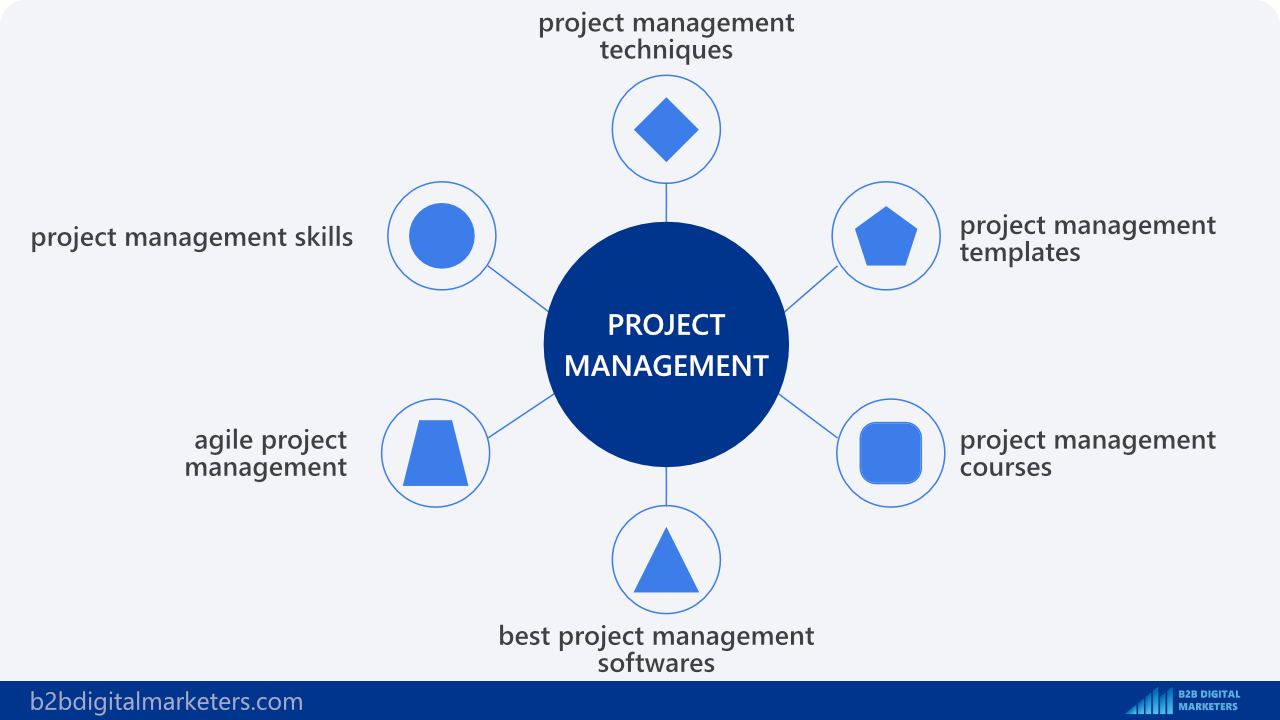
By following this, you’ll be able to incorporate semantic SEO practices, which involve targeting related keywords and concepts to your niche.
Like this, you create content that’s not only valuable to your audience but also sends a strong signal to search engines what’s your website about. This comprehensive approach to content creation is key to a successful SaaS SEO strategy.
Element # 4: On-Page SEO
On-Page SEO is a critical component of a comprehensive SaaS SEO strategy. It involves optimizing individual web pages to rank higher and earn more relevant traffic from search engines. Before publishing any content, it’s crucial to ensure that the page is fully optimized for on-page SEO.
One key aspect of on-page SEO is internal linking, which helps search engines understand the content and structure of your website, and can improve the ranking of other pages on your site.
However, many tend to skip these! So, as a smart marketer, you’ll not skip on internal links and will effectively build links to and from your content.
Additionally, here are five tips to improve your on-page SEO:
- SEO-Friendly URLs: Keep your URLs short, clean, and descriptive. Include your target keyword where possible. This helps search engines understand what your page is about and improves user experience.
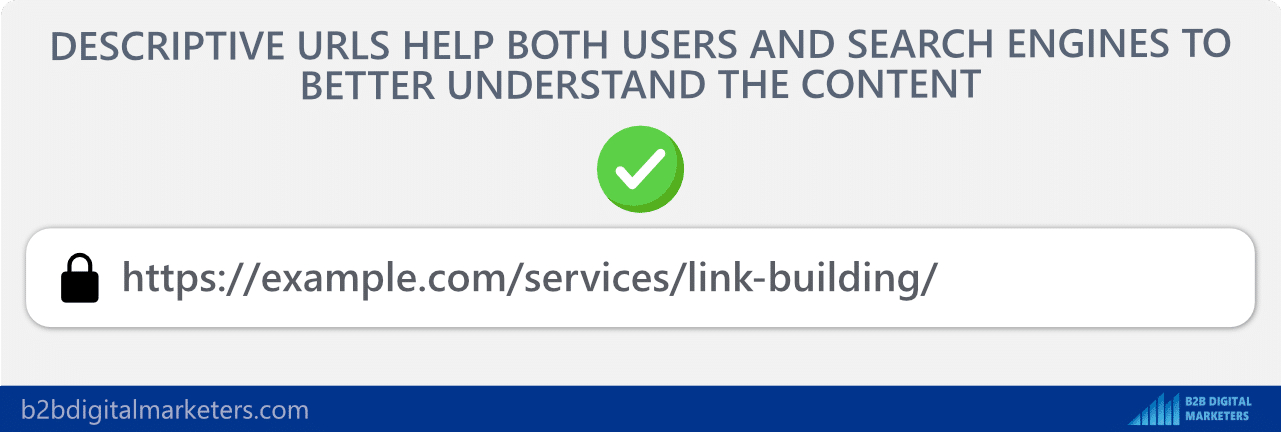
- Keyword Placement: Place your target keyword in strategic locations such as the title, headings, and the first 100 words of your content. However, avoid keyword stuffing and aim for a natural, reader-friendly use of the keyword.
- Image SEO: Optimize your images by using descriptive file names and alt tags. Include your target keyword in the alt text where relevant. This helps search engines understand what the image is about and can improve your visibility in image search results.
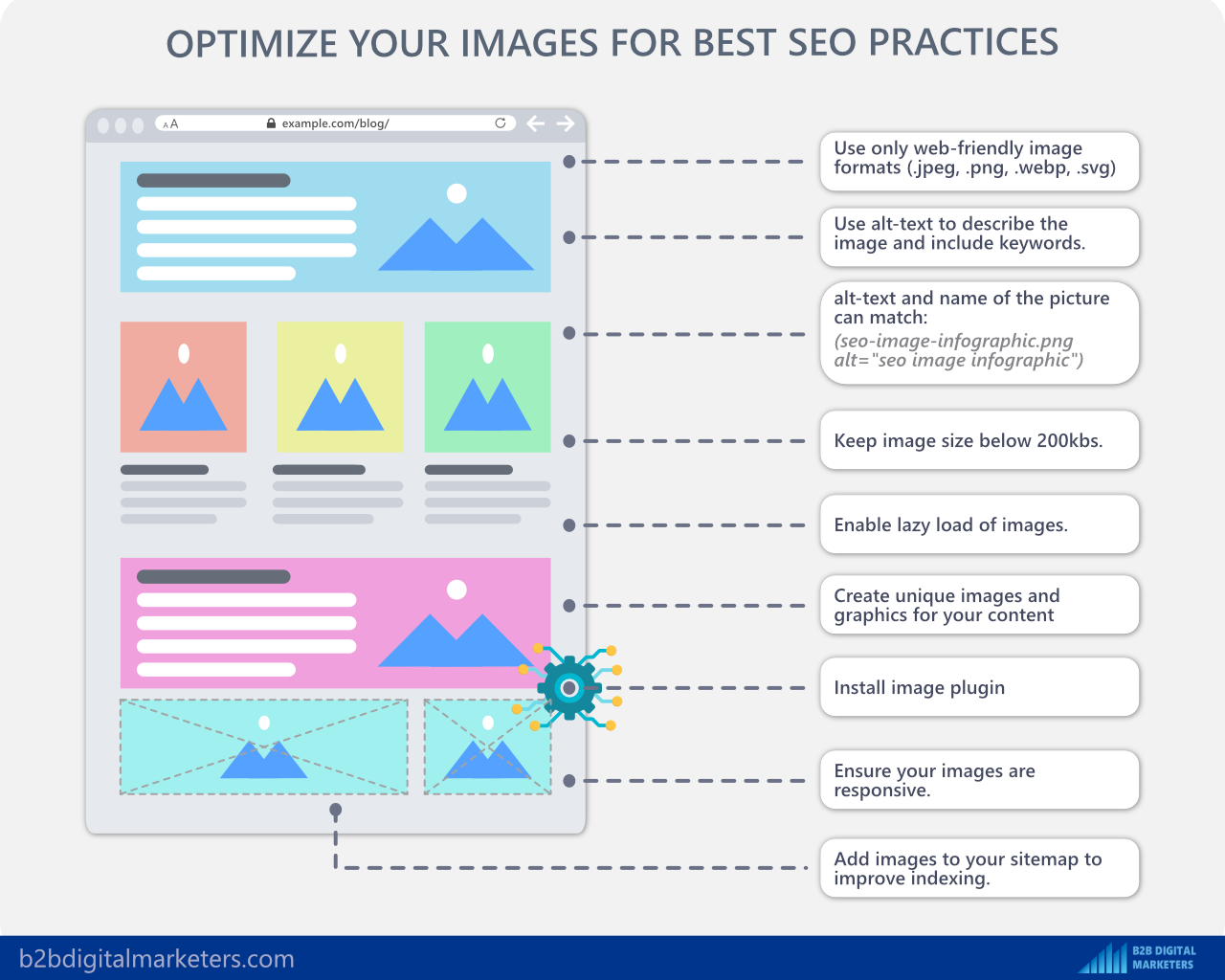
- SEO headings: Use header tags (H1, H2, H3, etc.) to structure your content and make it easier to read. Include your target keyword in at least your H1 tag.
- Title tag and Meta Description: Your title tag should be an accurate, concise description of a page’s content and include your target keyword. While not a direct ranking factor, a compelling meta description can improve click-through rates. Include your target keyword and a summary of the page’s content in your meta description.

By implementing these on-page SEO practices, you can improve the visibility of your individual pages and enhance the overall SEO performance of your SaaS website.
Element #5: Link Building Strategies
In the era of Google’s Search Engine Guideline (SGE), link building, especially link building for SaaS, has become even more crucial. With the ability to generate content at a massive scale easily, the competition for visibility in search engine results is fiercer than ever.
For SaaS companies, link building is a vital component of SEO strategy. It helps improve search engine rankings, drives referral traffic, and enhances brand visibility and authority.
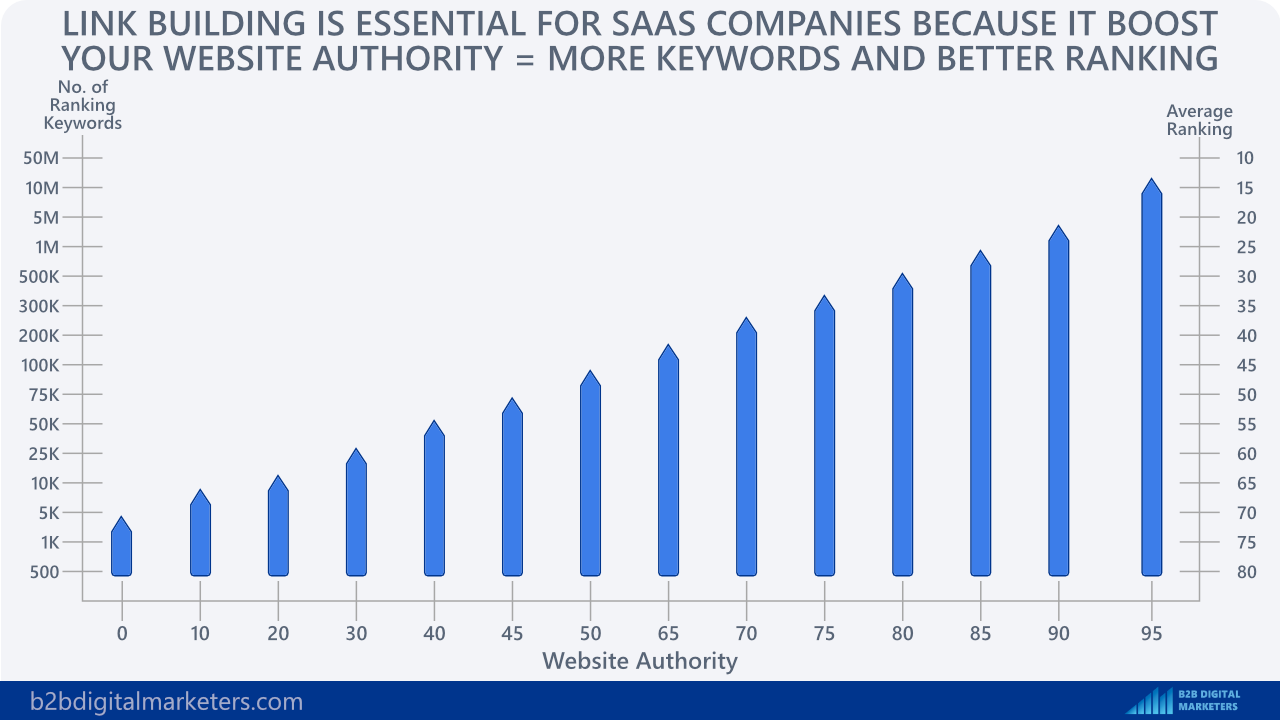
When other reputable websites link back to your site, it signals to search engines that your content is valuable and trustworthy.
There are several link building strategies that SaaS companies can employ. These include guest blogging, resource link building, SEO Press releases, and creating high-quality, link-worthy content. It’s also beneficial to leverage partnerships and collaborations for link building opportunities.
However, it’s important to note that link building is not just about quantity; the quality of your backlinks matters significantly. We’ll delve deeper into effective link building strategies in step 7 of this guide.
Step-by-Step Guide to Creating SaaS SEO Strategy
Creating a successful SaaS SEO strategy involves a series of well-planned steps, each contributing to the overall effectiveness of your online presence.
This guide will walk you through each step, from setting your KPIs and defining your target audience to optimizing your website, developing a link building strategy, to tracking your performance.
By following this guide, you’ll be well-equipped to create an SEO strategy that drives organic traffic, increases conversions, and ultimately grows your SaaS business. Let’s dive into each step.
Step #1: Set Your Objectives, KPIs, & Budget
Setting clear objectives, KPIs, and a budget is the first and one of the most crucial steps in creating a SaaS SEO strategy. This provides a roadmap for your SEO efforts and helps measure the effectiveness of your strategy.
Here’s an example of how you might set your objectives, KPIs, and budget:

When setting your objectives, it’s important to ensure they are SMART – Specific, Measurable, Achievable, Relevant, and Time-bound. Your KPIs should directly relate to your objectives and provide a quantifiable way to measure success.
Of course, these are only examples of classic SaaS objectives, but ultimately, it really depends on what you want to achieve, where you struggle, and what needs to be improved.
Additionally, your budget should take into account all potential costs, including content creation, SEO tools, and any outsourcing or agency fees.
Remember, SEO is a long-term strategy, so your budget should reflect this. It’s also important to regularly review and adjust your budget as needed based on the results of your SEO efforts.
Step #2: Define Your Target Audience
Defining your target audience is a critical step in creating an effective SaaS SEO strategy. Knowing who you’re trying to reach informs every other aspect of your SEO efforts, from keyword research to content creation.
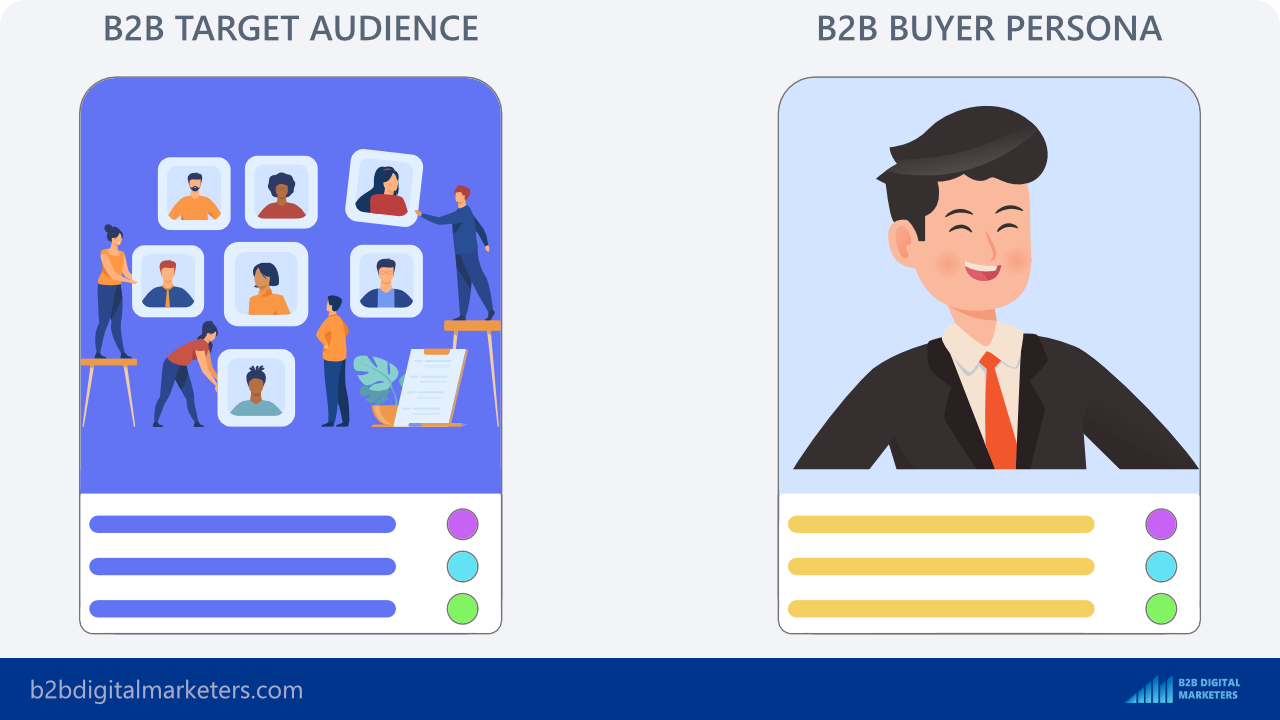
For SaaS companies, especially those in the B2B sector, your B2B target audience might include decision-makers in specific industries or roles.
For example, if you offer project management software, your target audience might include project managers, team leaders, and operations managers in tech companies.
To define your target audience, consider factors like:
- Demographics: What industries do they work in? What’s their job role? What’s their level of education? Where are the companies based? Etc.
- Psychographics: What are their challenges and pain points? What are their goals and values?
- Behavior: How do they search for information online? What keywords do they use? What type of content do they engage with?
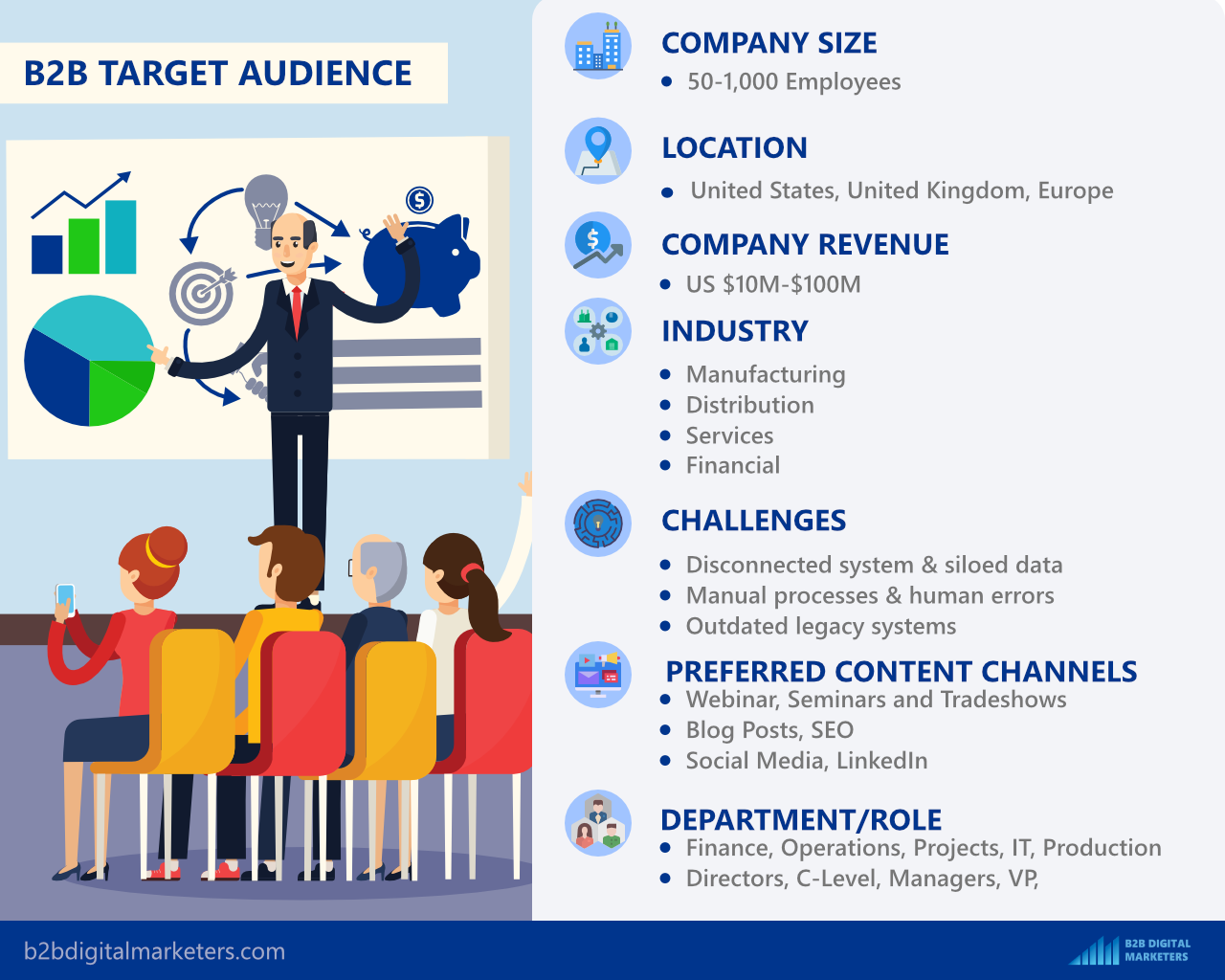
Once you have a clear picture of your target audience, you can tailor your SEO strategy to their needs and behaviors. This ensures your content resonates with them and increases the chances of them finding your website through search engines.
Remember, the more specific you can be in defining your target audience, the more effective your SEO strategy will be. It’s better to attract a smaller number of highly relevant visitors than a large number of visitors who aren’t interested in your product.
Step #3: Positioning & Messaging:
Positioning and messaging are crucial aspects of SaaS marketing, including SaaS SEO. They determine how your brand is perceived in the market and what type of customers you attract.
The right positioning and messaging can be the difference between attracting high-paying customers and struggling with a customer base that doesn’t generate sufficient revenue.
In the SaaS industry, it’s not sustainable to rely on a large number of low-paying customers. Instead, your goal should be to attract higher-paying customers who see the value in your product.
For instance, if you’re selling SEO software, targeting SEO agencies could be a smart move. These agencies typically have lower churn rates, higher lifetime value, and longer customer retention periods.
Your messaging should not aim to appeal to everyone, but rather to the specific group of people or companies that drive the most revenue for your business. Remember the 80/20 rule: 20% of your customers will likely drive in 80% of your revenue.
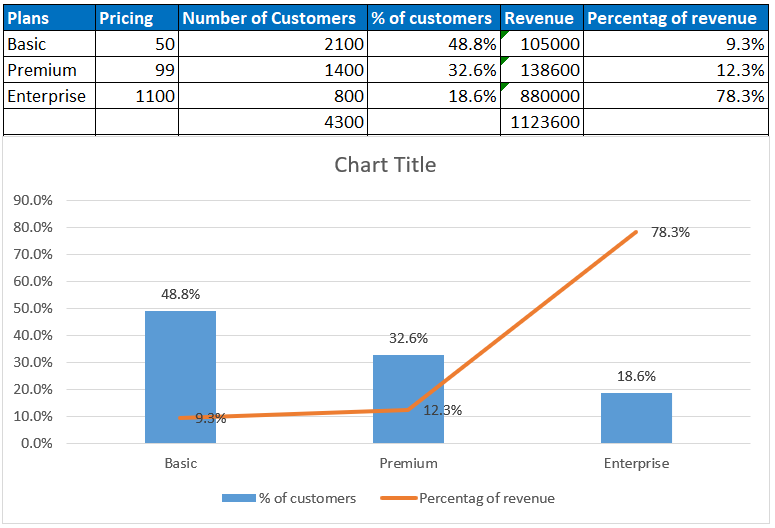
Therefore, your messaging should be tailored to attract and retain these high-value customers.
Market research is essential for effective positioning. Understanding your market and competitors can help you identify your unique selling proposition – what your SaaS does better than anyone else.
This can help you avoid becoming just another “me too” product in your industry and instead position your SaaS as a unique and valuable solution.
Here are a few additional tips for effective SaaS positioning and messaging:
- Understand Your Customers’ Pain Points: What problems does your SaaS solve? How does it make your customers’ lives easier? Your messaging should clearly communicate this.
- Highlight Your Unique Features: What features or capabilities does your SaaS offer that your competitors don’t? Make sure these are front and center in your messaging.
- Speak Your Customers’ Language: Use the terms and phrases your customers use to ensure your messaging resonates with them.
- Be Consistent: Ensure your positioning and messaging are consistent across all your marketing channels, including your SEO efforts.
By carefully crafting your positioning and messaging, you can attract the right customers and set your SaaS up for success.
Step #4: Optimize Your Website for Technical SEO
Technical SEO is the foundation of any successful SEO strategy and should be the first thing you address. It involves optimizing the infrastructure of your website to help search engines crawl and index your content effectively.
While much of the technical SEO is handled by theme developers, hosting providers, and caching plugins, there are still several aspects that you need to pay attention to.
Firstly, ensure that your robots.txt file is correctly configured. This file tells search engines which pages they can or cannot crawl on your website. A misconfigured robots.txt file can prevent search engines from accessing important pages.

Page speed is another crucial aspect of technical SEO. Slow-loading pages can harm your search engine rankings and provide a poor user experience. To improve page speed, consider using a Content Delivery Network (CDN), optimizing your images, and minimizing your CSS and JavaScript files.

Google’s Core Web Vitals are a set of metrics that measure the speed, responsiveness, and visual stability of a page. Ensuring your website performs well on these metrics can improve your search engine rankings.
Duplicate content can confuse search engines and lead to ranking issues. Regularly check your website for duplicate content and use canonical tags or 301 redirects to address any issues.
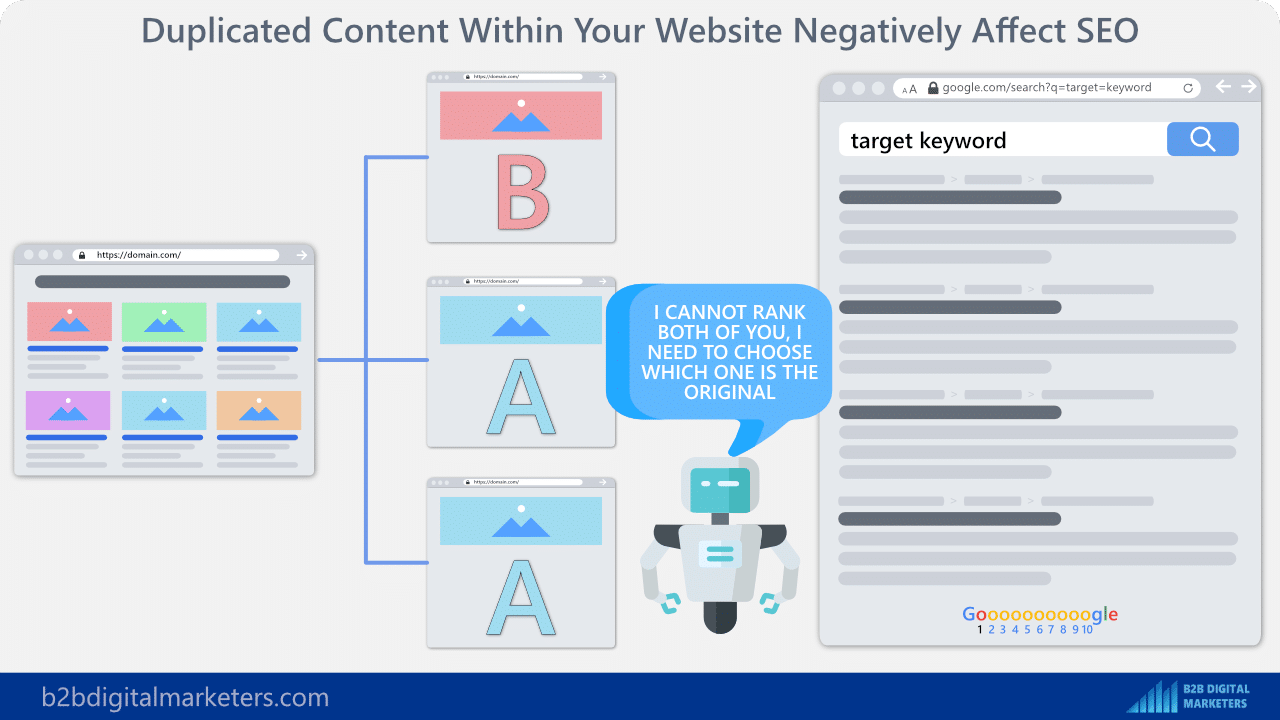
Lastly, ensure your website is secure. Implement HTTPS (secure HTTP) to ensure data transmitted between your website and its users is encrypted and secure. A secure website is a trustworthy website in the eyes of both users and search engines.
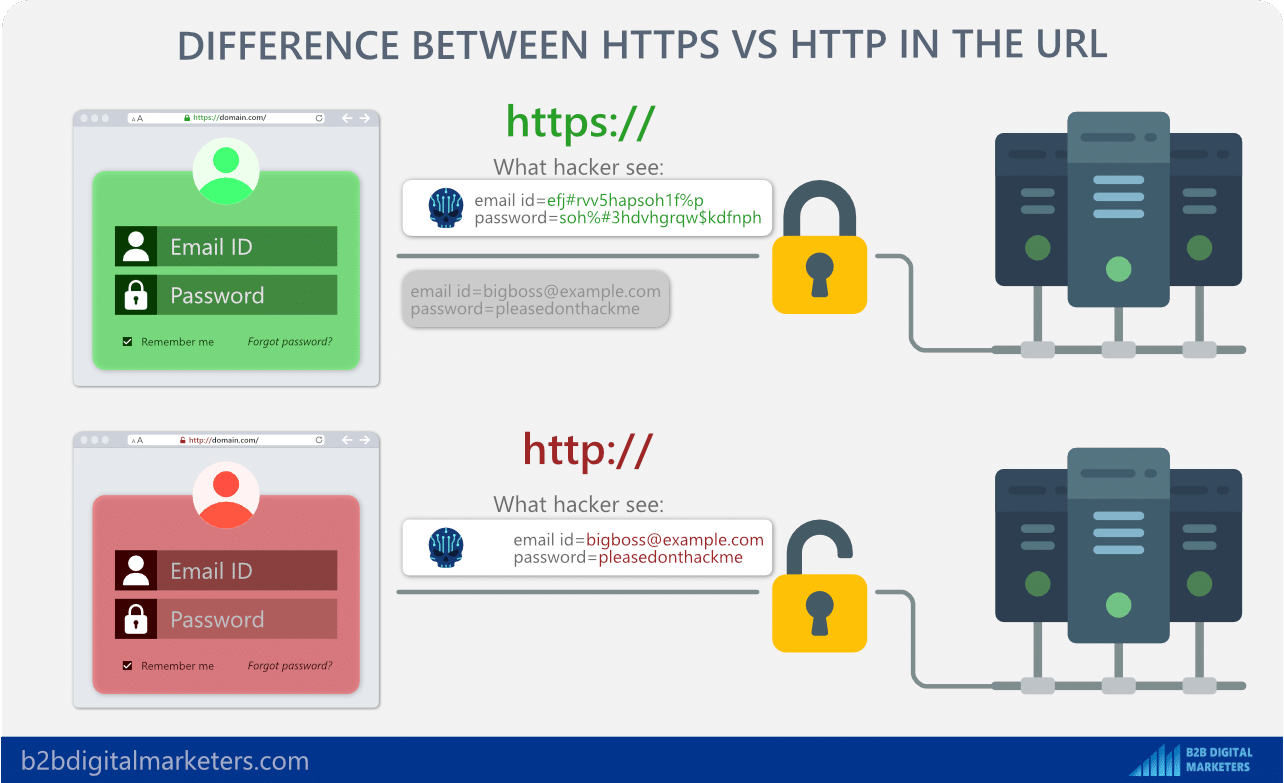
Of course, overlooking all these and other technical aspects of your website is not easy and you should be using website audit crawlers like SE Ranking Website audit tool to manage your routine website audit checks to ensure everything runs tip top!
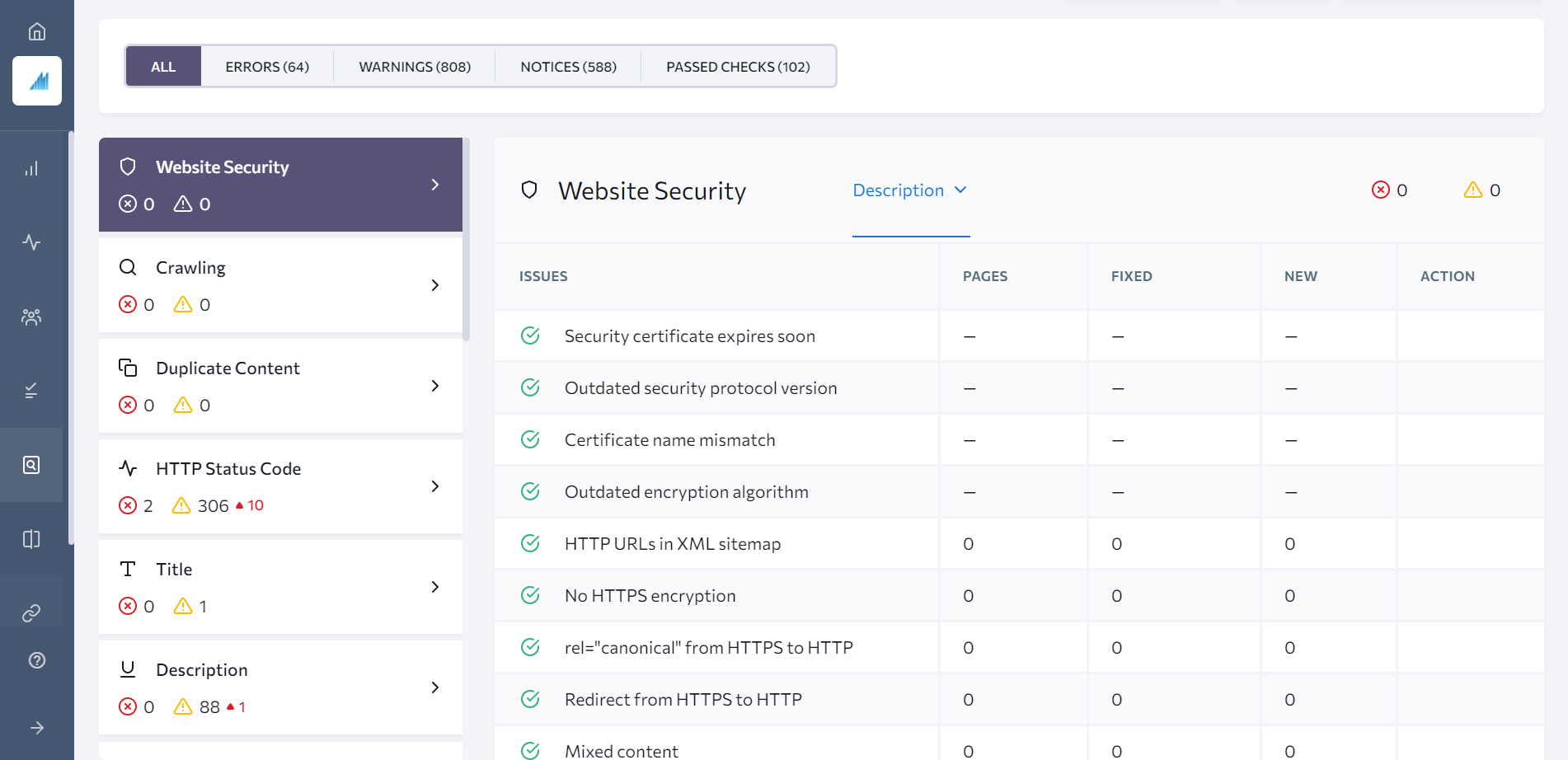
For more complex website audit checks I recommend using NetPeak Spider which gives you more depth and more capabilities to slice and dice your website technical aspects data.
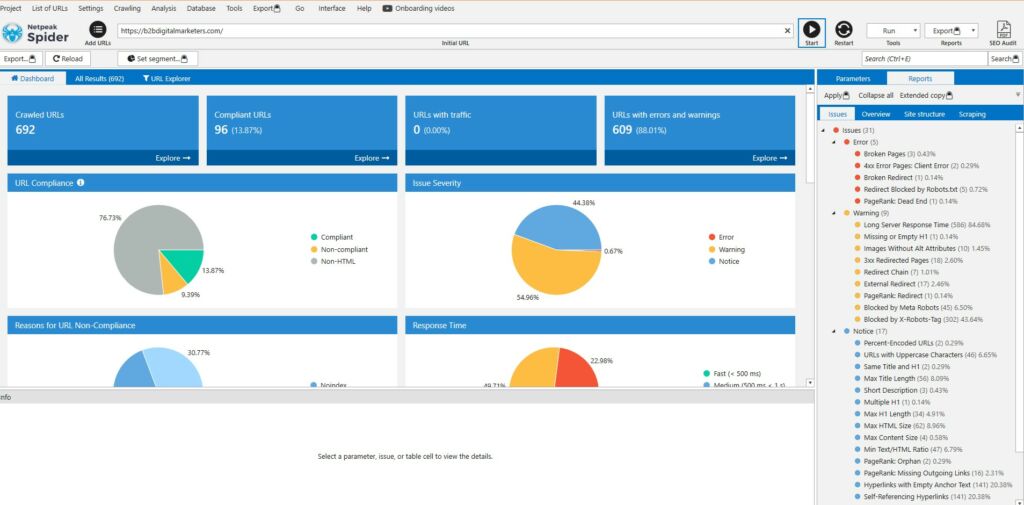
Step #5: Perform Thorough Keyword Research
The next step of the SaaS SEO is to perform deep keyword research to identify how your prospects are searching on the internet, so you can target those SEO keywords and create content that attracts your target audience to your website.
Now, there are tons of keyword research techniques that you can use, let me show you two of my most favorite:
The best way to get started with keyword research, if you don’t have a clue about that industry is to analyze your closest competitors’ ranking keywords.
Especially the ones that are already doing well with SEO, or at least the best of them all.
To start, first, you must analyze your website with a Competitive Research tool like SE Ranking.
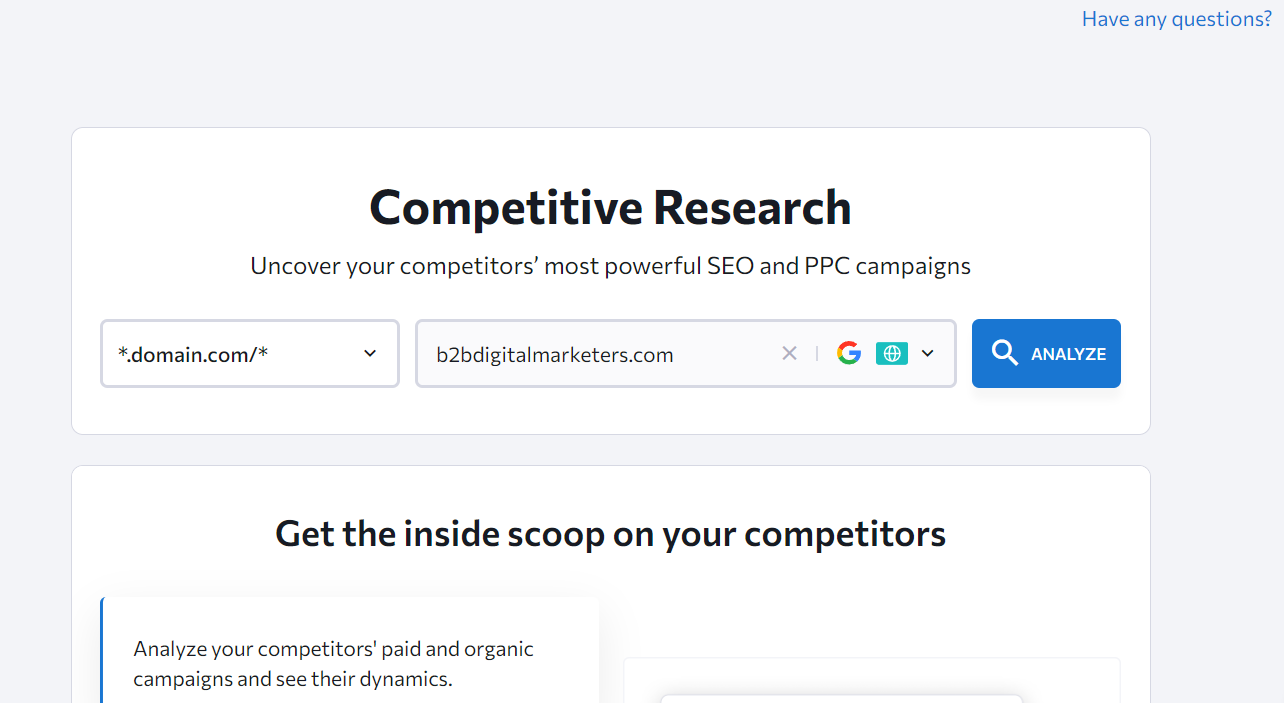
And then in the “Competitors” report you’ll find hundreds of your close competitors based on your ranking keywords.

From here you can click on the “Missing Keywords” number and you’ll instantly receive thousands of keywords that you’re not ranking for, but probably you should be.
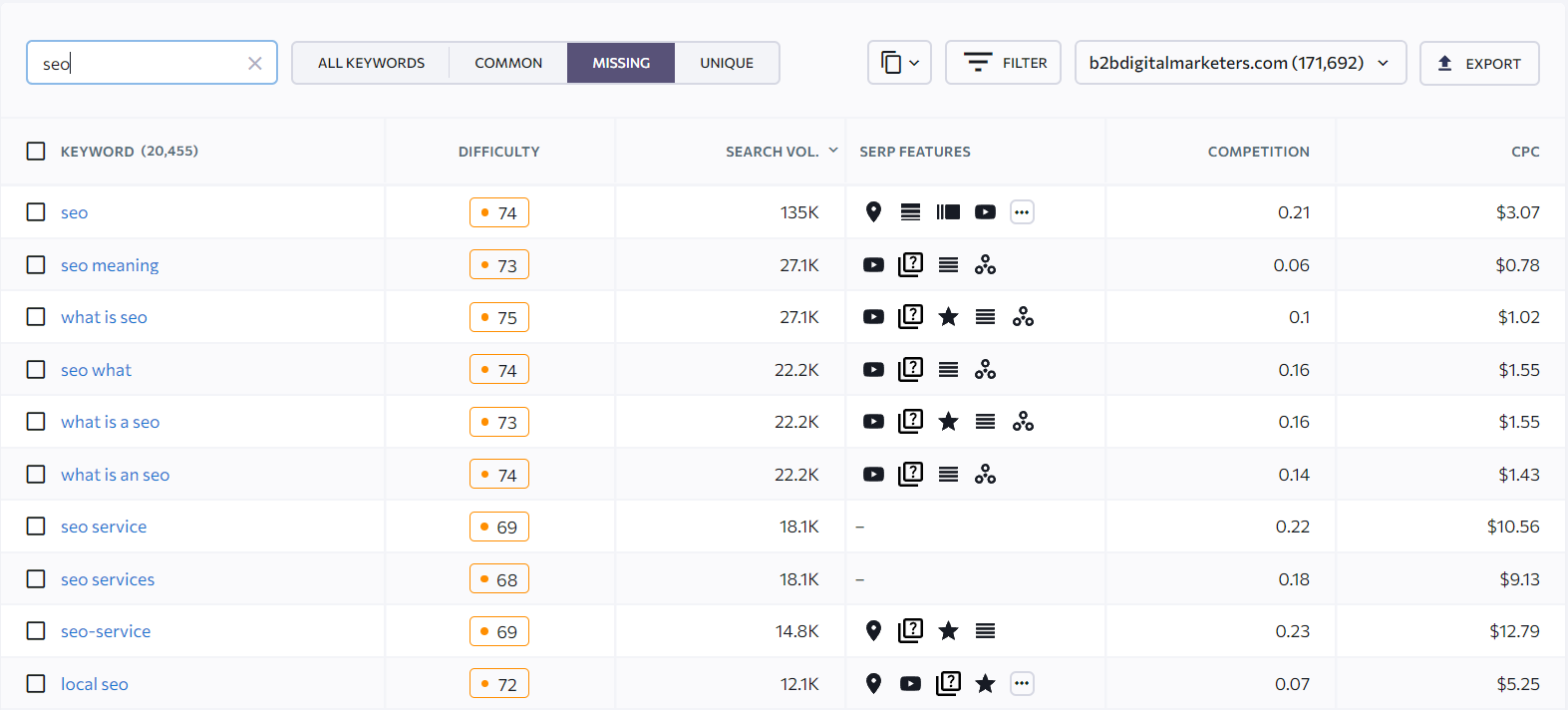
And the second technique is even simpler and that is analyzing your close competitors ranking keywords.
This is if you don’t have any ranking keywords or you just want to know more about your competitors’ SEO strategy.
Here is how to do it:
Pop in your close competitor into SE Ranking Competitive Research tool:
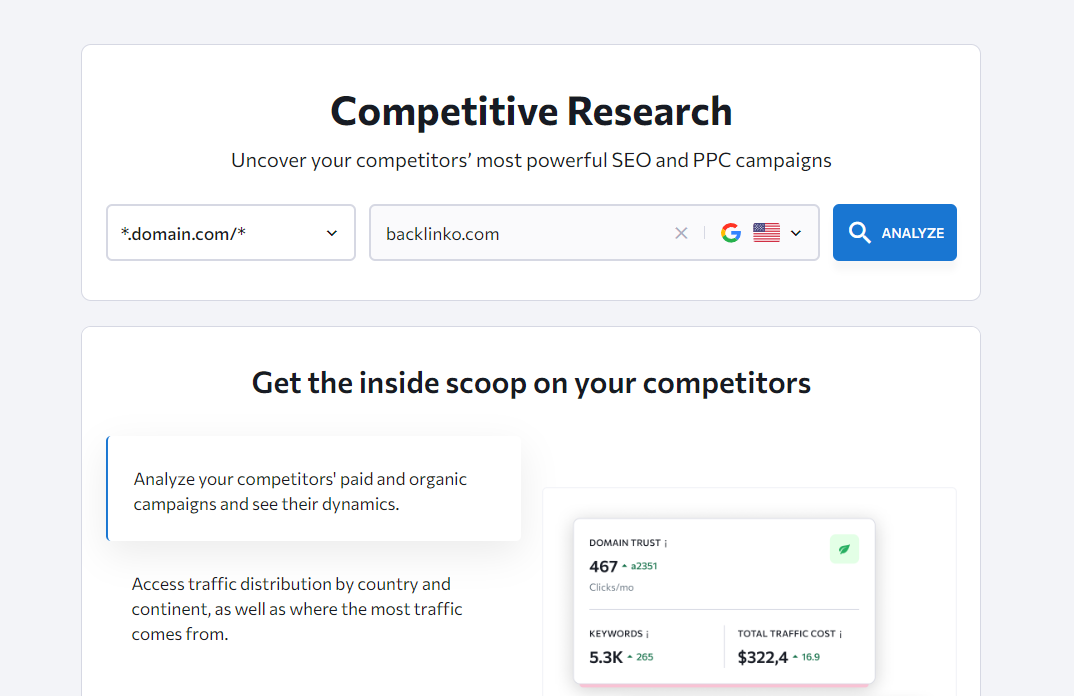
And then visit their “Organic Keywords” report.
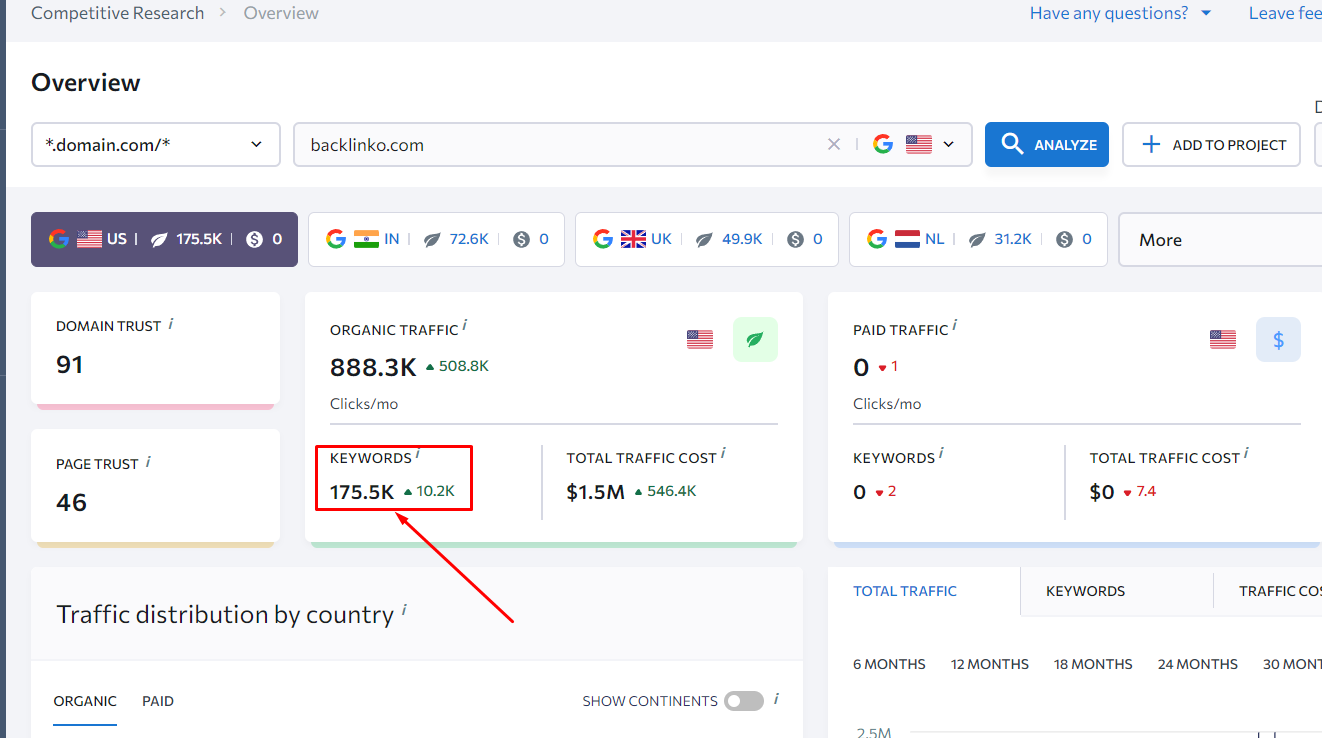
And here you have all their ranking keywords! Now just select the most important and relevant.
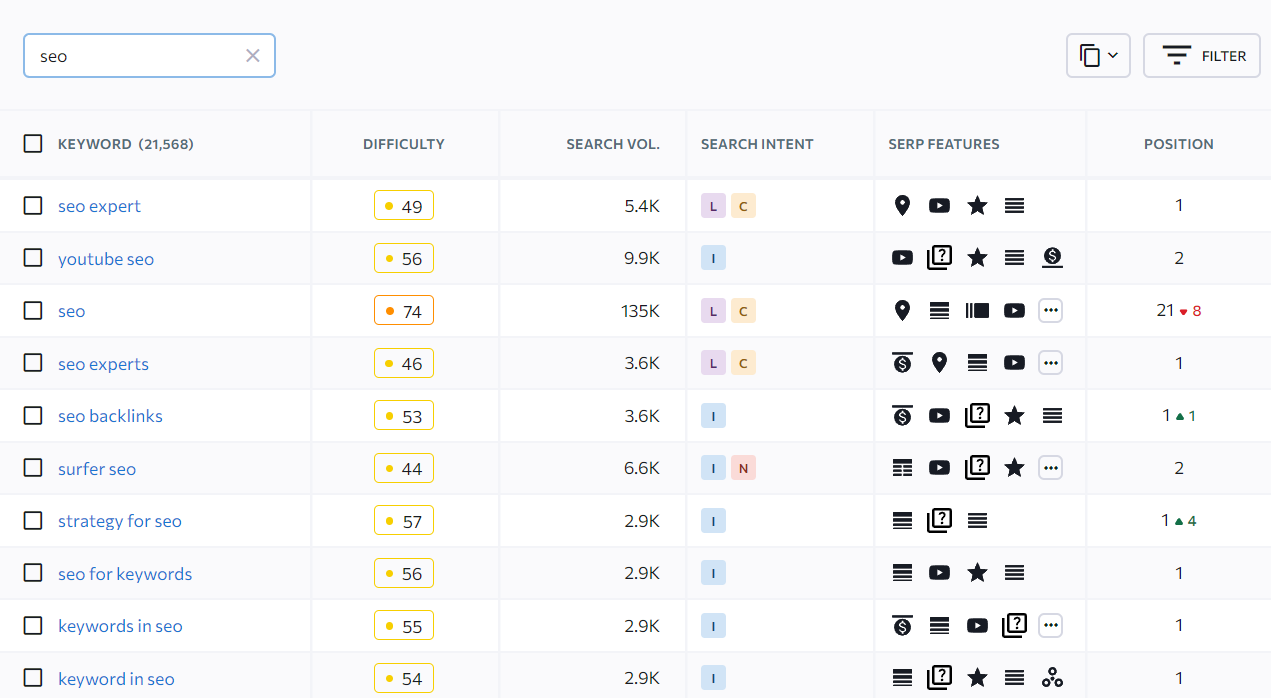
Of course, there is a way more keyword research strategies to find relevant keywords, and to learn more about them, check out these articles:
- Long-Tail Keywords: 8 Unique Techniques to Find Them
- Keyword Research for SEO: 6 Steps Guide for Beginners to Boost Ranking
- How Do I Find SEO Keywords? 11 Best Techniques
- B2B Keyword Research: Bring Leads & Revenue from SEO
Step #6: Target the Main Primary Keywords
Targeting the main primary keyword is a critical aspect of SEO. When you conduct keyword research, you’ll come across a plethora of secondary and LSI keywords. For instance, if you’re dealing with “CRM software,” you might encounter variations like “CRM system” and “CRM platform.” The challenge lies in identifying the primary keyword that has the highest search volume or potential.
To illustrate, let’s consider the keyword “CRM platform”. When you analyze this keyword in SERPs, you might notice that the primary keyword that most pages are targeting isn’t “CRM platform” but “CRM software” or “what is CRM”.

Additionally, if you analyze these keywords, you can clearly see that “crm software” and “what is CRM” have higher search volumes.
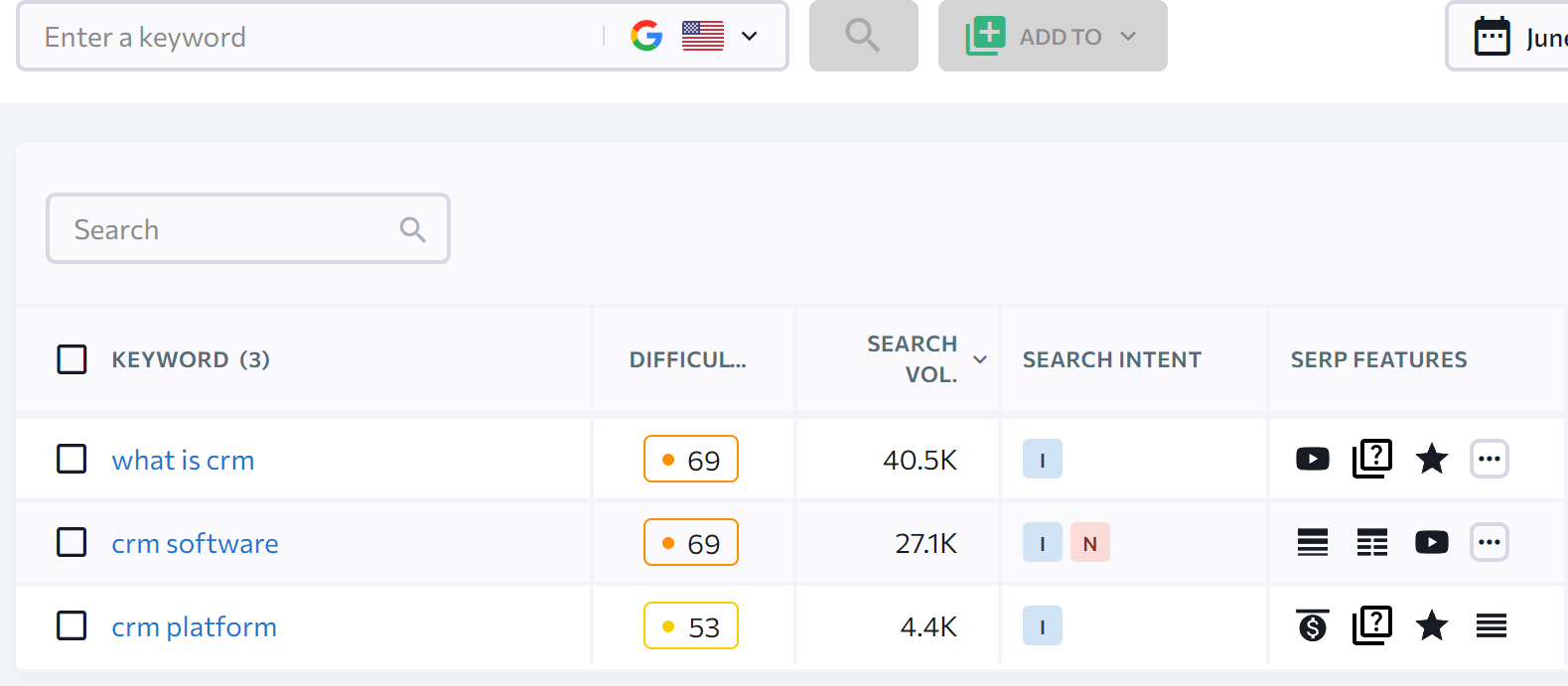
This observation indicates that “CRM software” has a higher organic traffic potential and should be the keyword you target with your webpage as well as, you should target the keyword “what is CRM”.
Similarly, if you’re dealing with the keyword “SEO software,” you might find that the primary keyword being targeted by most pages is “SEO tools”.
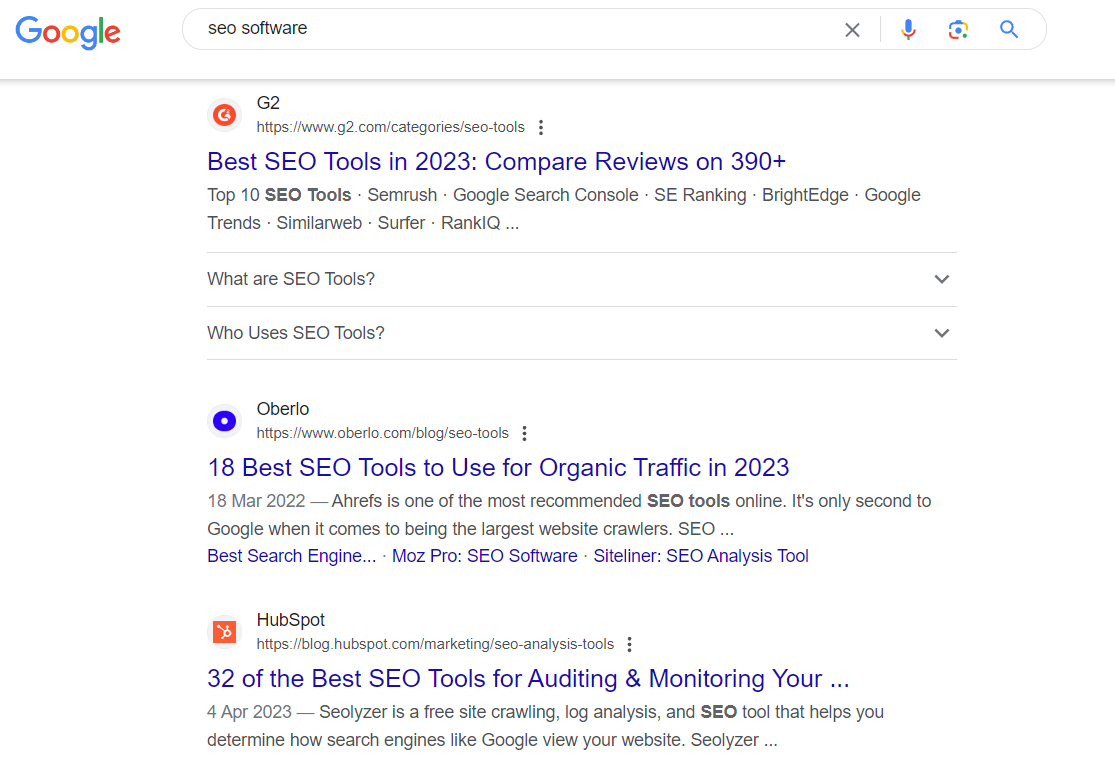
And also, it has a higher search volume.
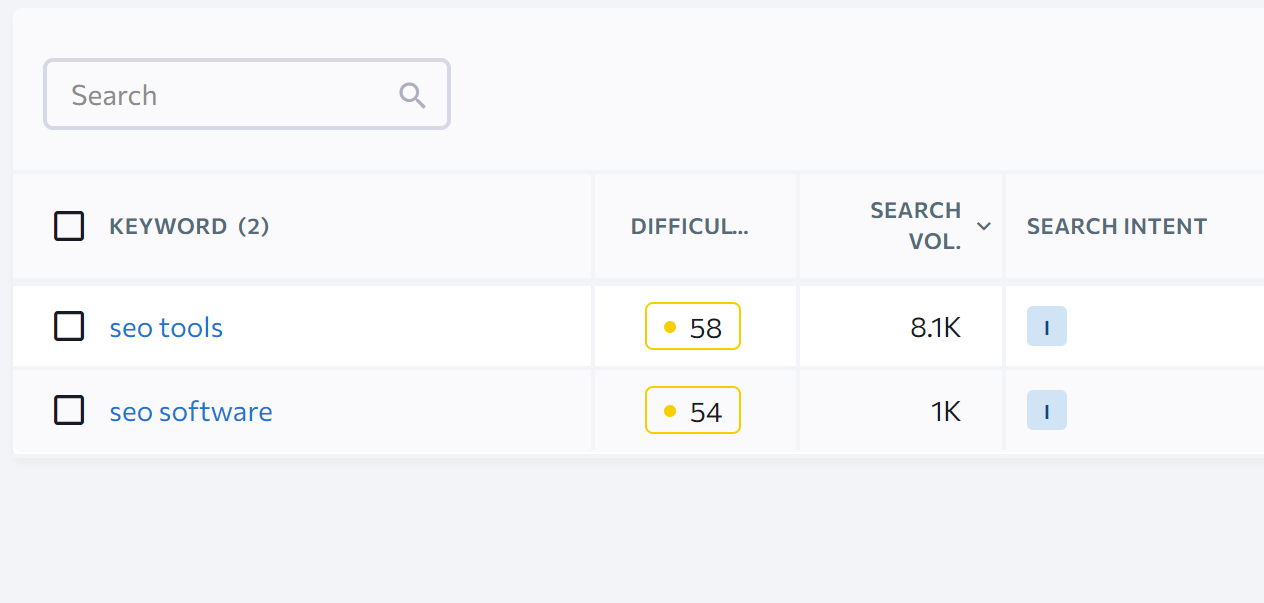
Again, this suggests that “SEO tools” is the keyword with the highest organic traffic potential and should be the one you target.
Remember, the goal is to optimize your webpage to rank highly in the search engine results pages (SERPs) for the primary keyword. Therefore, it’s crucial to identify the primary keyword with the highest potential and focus your SEO efforts on it.
Moreover, primary keywords aren’t limited to head or body keywords. They can be any keyword that can be targeted with a webpage, including head, body, and long-tail keywords. The key is to ensure that these keywords are relevant to your niche, industry, or business.
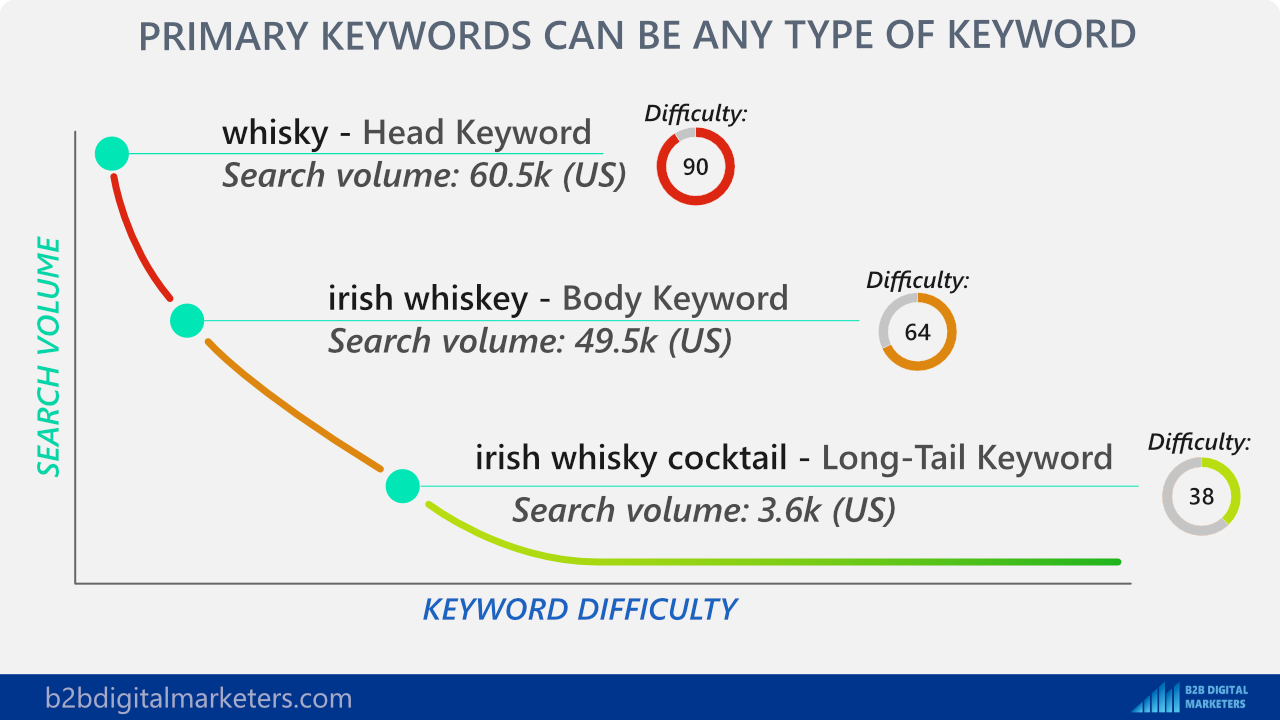
In conclusion, targeting the main primary keyword is a strategic move that can significantly enhance your SEO efforts.
By focusing on the keyword with the highest potential, you can drive more qualified traffic to your website and improve your search engine rankings.
Step #7: Produce SEO-Friendly Content
Producing SEO-friendly content is a multi-step process that begins with analyzing the search engine results pages (SERPs) to identify search intent.
For instance, if your target keyword is ” project management”, you need to analyze the SERPs to understand what type of content Google believes is relevant to that keyword. Is it blog posts, product pages, or informational articles? This analysis will guide the format of your content.
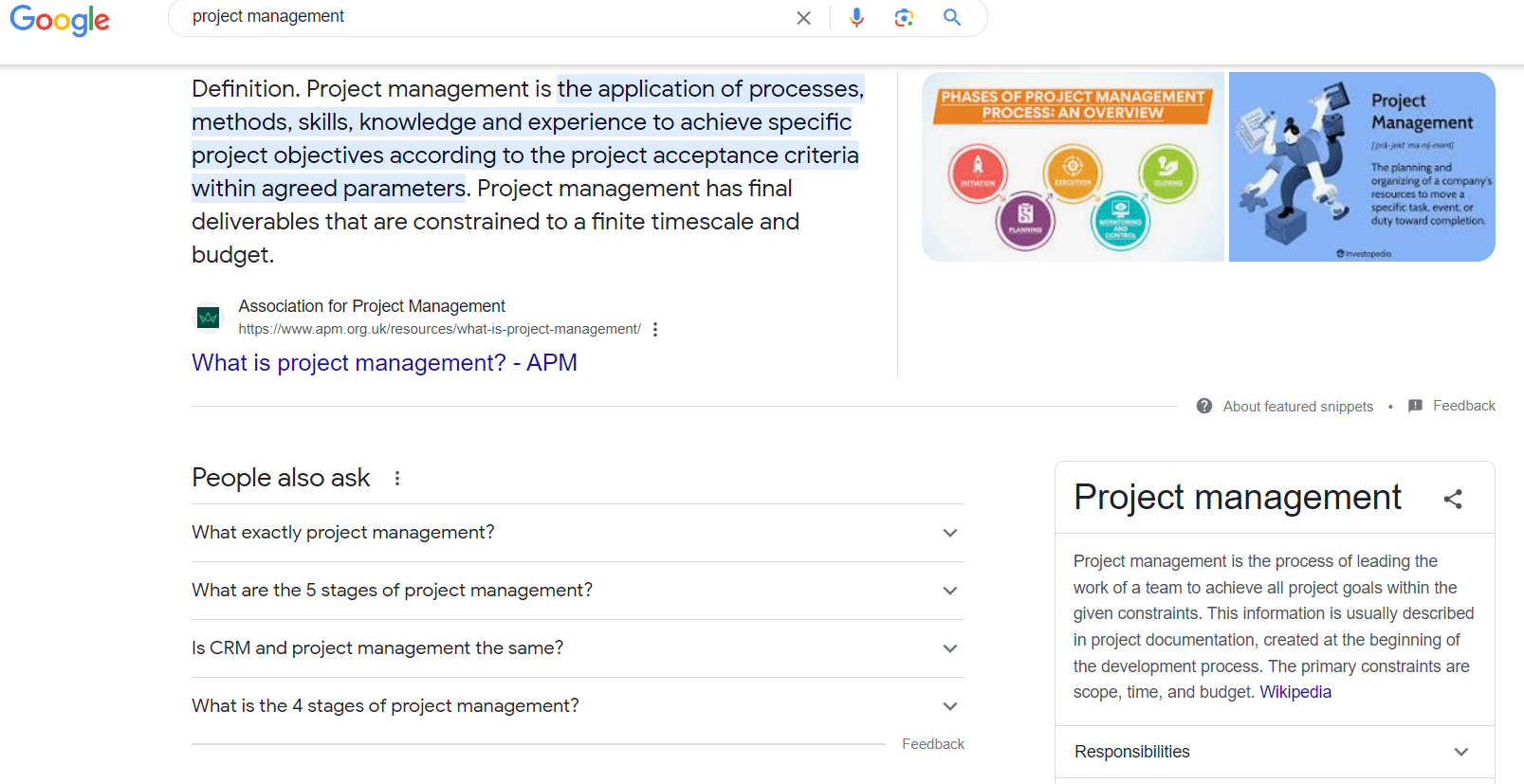
Let’s consider an example. If you search for “best project management software”, you’ll likely find comparison articles ranking different project management platforms.
This indicates that the search intent is commercial, and the user is in the research phase.

In addition to identifying search intent, SERP analysis can help you find Latent Semantic Indexing (LSI) or secondary keywords. These are related terms that Google expects to find in a piece of content that’s truly about a certain topic.
For instance, if your primary keyword is “CRM software,” LSI keywords might include “customer relationship management”, “pipeline management”, “sales tracking”, and “contact management”.
Creating an SEO-friendly article outline with SEO headlines is another crucial step. To do this, analyze the top-ranking pages for your target keyword. What subtopics do they cover? What questions do they answer? This can guide the structure of your own content.
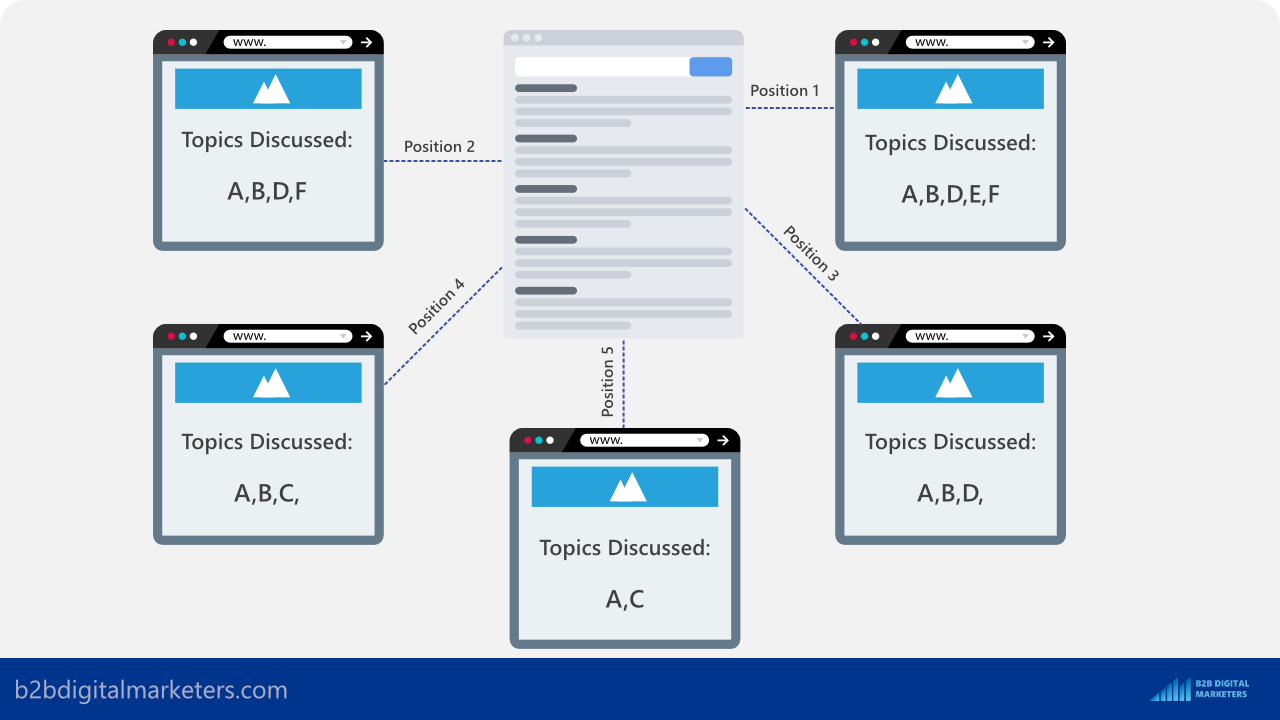
Finally, don’t forget to check the “People also ask” section.

And the related searches at the bottom of the SERPs. These can provide additional insights into what information users are looking for when they search for your target keyword.
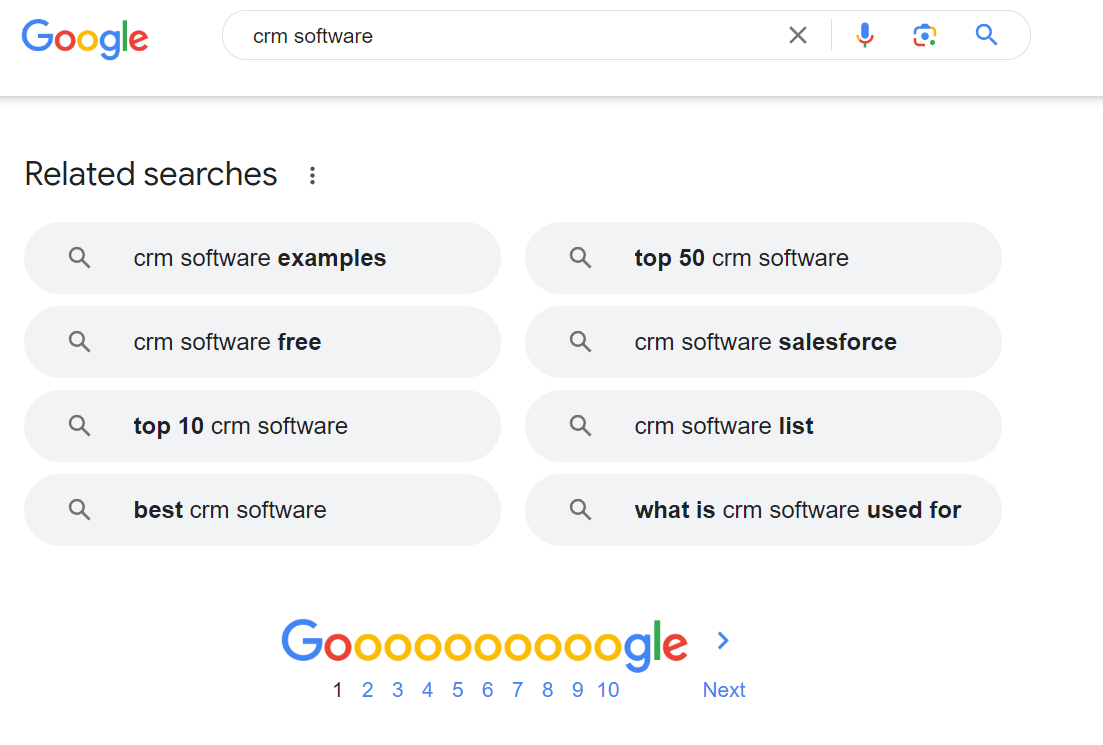
For more information about analyzing SERPs, I recommend checking out Kyle Roof’s presentation here:
By following these steps, you can produce SEO-friendly content that meets user intent, targets relevant keywords, and has a strong chance of ranking highly in the SERPs.
Step #8: Always Do Full On-Page SEO (Including Internal Links)
On-page SEO is crucial as it makes it easier for search engines to crawl and index your website. You want to streamline this process for every page on your site, which is why on-page SEO should be a priority. It should be implemented during the content creation process and before the content is published.
One effective strategy that I like to do is to create an outline of my article, write down notes and thoughts for each headline and subheadline, and even include keywords that I want to mention. This approach helps structure my content and ensures I cover all necessary points and I can include internal links.
For example, here you can see a screenshot of this section before it was written:
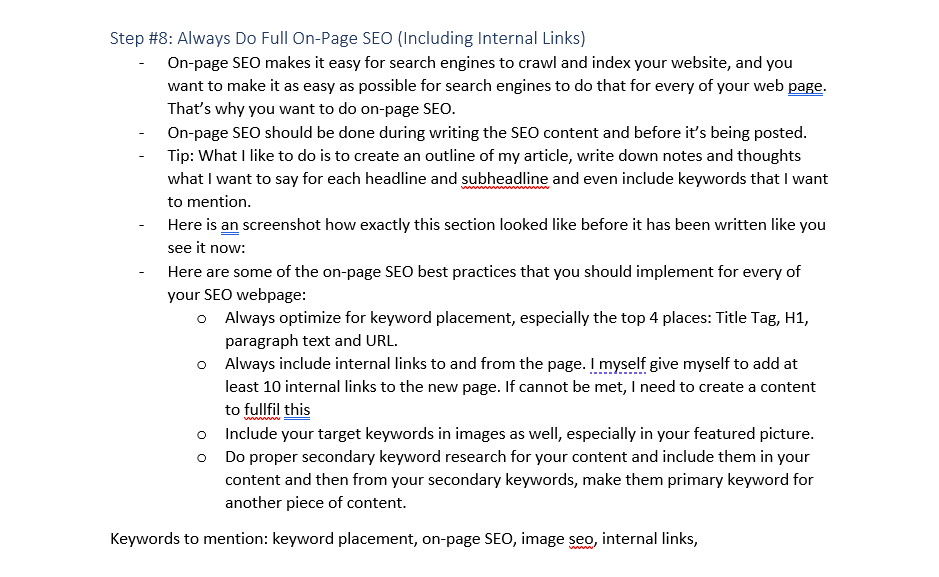
With that, here are some on-page SEO best practices that you should implement for every webpage:
- Optimize for keyword placement: The top four places to include your keyword are the Title Tag, H1, paragraph text, and URL. These are the areas that search engines pay the most attention to.
- Include internal links: Always add internal links to and from the page. Aim to include at least 10 internal links on each new page. If this isn’t possible, consider creating more content to facilitate this.
- Optimize images: Include your target keywords in your image file names and alt text, especially for your featured image. This helps search engines understand the content of your images.
- Use secondary keywords: Conduct thorough secondary keyword research for your content and include these keywords in your text. Then, use these secondary keywords as primary keywords for other pieces of content. This creates a network of interrelated content on your site and boosts your Semantic SEO.
- Use meta descriptions: While not a ranking factor, meta descriptions can influence click-through rates. Make sure each page has a unique meta description that includes your primary keyword and accurately describes the page content.
- Optimize for mobile: More than half of all web traffic comes from mobile devices, so your site must be mobile-friendly. Ensure your site is responsive and that your content looks good and is easy to navigate on smaller screens.
Of course, there are a lot more on-page SEO strategies that you can do to improve the SEO of your page, but in most cases, in median competition, this is more than enough to compete and boost your ranking and website visibility.
Step #9: Develop Your Link Building Strategy
Backlinks and content are the two pillars of a successful SEO strategy. However, link building can be risky, as many Google algorithm updates target manipulative link building practices. Therefore, it’s crucial to focus on building high-quality backlinks.
Here’s what that means:
- Target websites with organic traffic: Aim to build backlinks on websites with a minimum of 500, preferably 1000, organic traffic according to your SEO tool. This ensures that the site is reputable and can pass on some of its authority to your site.
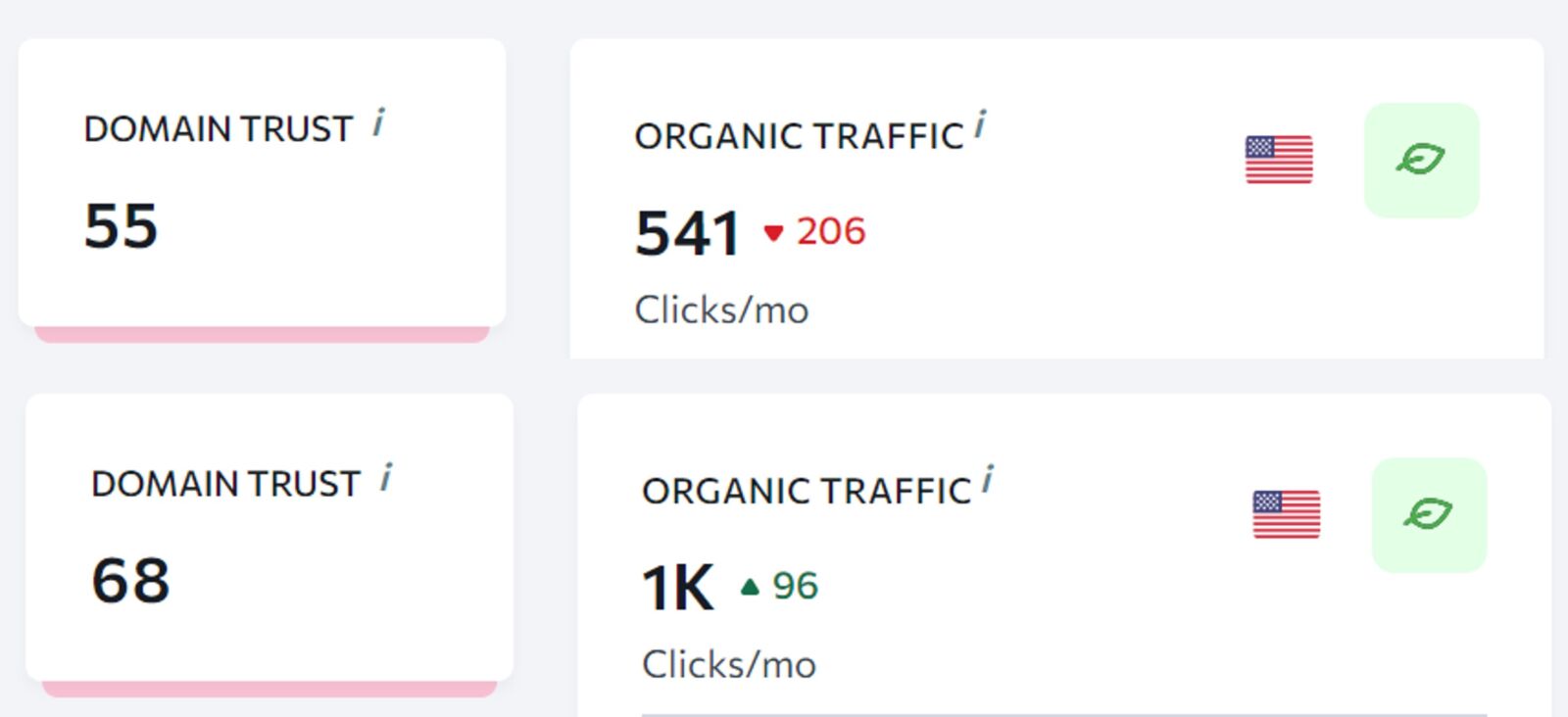
- Consider website authority: Start building backlinks on websites with similar website authority to yours, give or take 10 points. This helps maintain a natural link profile that won’t raise red flags with search engines.

- Geographic relevance: If you’re targeting traffic from a specific location, make sure you build backlinks on websites predominantly receiving traffic from that location. For example, if you’re a US-based SaaS company, aim for backlinks from sites with a significant US audience.
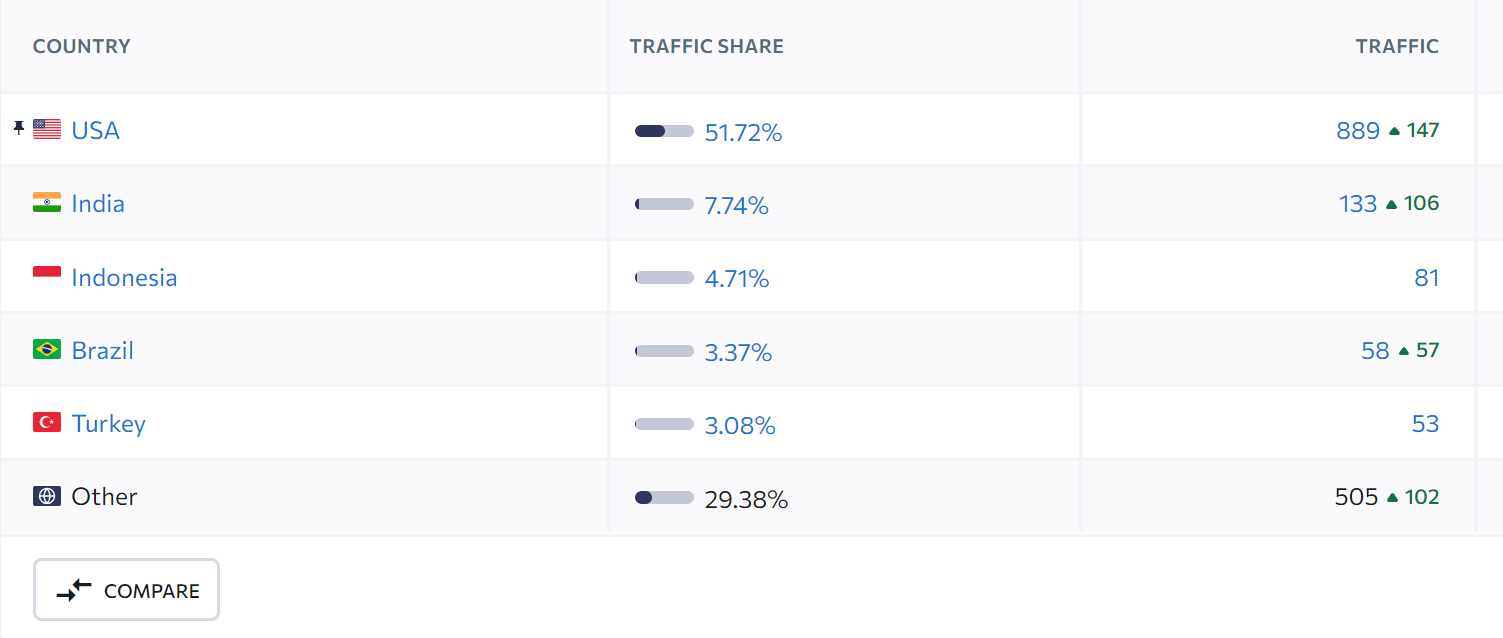
- Contextual backlinks and niche backlinks: Build backlinks only on sites that write on similar topics, and ensure that the content containing the backlink is related to your niche or industry. This adds to the naturalness and relevance of your backlinks.
However, before you start building links, it’s important to conduct a backlink audit to ensure that your existing backlink profile is clean and free of spammy links that could harm your SEO.
Here are some of my favorite link building strategies for SaaS websites:
- HARO Link Building: Help A Reporter Out (HARO) is a platform where journalists seek expert insights. You can provide those insights and earn backlinks in return.
- Competitor Backlink Analysis: Analyze your competitors’ backlinks to find opportunities for your own site.
- Resource Link Building: Create valuable resources that other sites will want to link to.
- Guest Posting: Write articles for other sites in your industry in exchange for a backlink.
- Link Insertion: Reach out to sites that mention your brand or relevant topics and ask them to insert a link.
- Unlinked Mentions: Find mentions of your brand that aren’t linked and request the site owner to add a link.
Remember, link building is a long-term strategy, and it’s all about quality, not quantity. By focusing on building high-quality, relevant backlinks, you can improve your site’s authority and rankings sustainably.

Also, I recommend you to read the guides I provided, to learn how to build backlinks in a “clean way” so you don’t get penalized and achieve the best results.
To learn more about link building check out the links I provided and here are a few more:
- Blogger Outreach: The Right and Not Spammy Way
- New Style Tiered Link Building That Actually Works
- How to Find Backlinks to a Page and Website
- How to Track Backlinks
- How to Track Keyword Ranking
Step #10: Track, Measure & Improve
The final step in creating an effective SaaS SEO strategy is to track your progress, measure your results, and make improvements based on your findings. This is an ongoing process that should be integrated into your regular operations.
Here are some key metrics you should track:
- Revenue Growth: This is the ultimate goal of your SEO efforts. Are you seeing an increase in revenue as a result of your SEO strategy?
- Monthly Recurring Revenue (MRR) Growth: For SaaS companies, MRR is a critical metric. Is your MRR growing month over month?
- Large Plans Growth: Are you attracting more customers to your higher-tier plans? This is a sign that your messaging and positioning are resonating with the right audience.
However, there are some statistics that you shouldn’t worry too much about, specifically:
- Conversion Rate: While it might seem counterintuitive, a high conversion rate isn’t always a good thing. If your conversion rate is high, it could mean that your product appeals to a broad audience. While this might seem positive, it can actually dilute your messaging and positioning. Remember, your goal is to attract customers who are willing to pay for your highest-tier plans and stay for the long term. By focusing on conversion rate, you might end up targeting a larger group of customers in general, which can result in fewer high-paying, long-term customers. Therefore, optimizing for conversion rate can be a trap that many fall into causing you to have smaller MRR & ARR.
Remember, SEO is a marathon, not a sprint. It takes time to see results, and the process involves constant testing, measuring, and tweaking. But with patience and persistence, you can create an effective SEO strategy that drives significant growth for your SaaS business.
19 SaaS SEO Best Practices to Follow
Here are some of the most important SaaS SEO best practices to follow:
- Build Out Your Topic Clusters: Topic clusters are a group of interlinked web pages. They’re built around one piece of pillar content targeting a broad keyword, and multiple pieces of cluster content targeting related, narrower keywords. This helps establish your site’s authority in the eyes of search engines.
- Extend Your Topic Clusters: Once you’ve built your initial topic clusters, look for opportunities to extend them with new related content. This can help you cover a topic more comprehensively and rank for more keywords.
- Create a Topical Authority for Your Money Pages: Topical authority is a key factor in SEO. By creating content that covers a topic comprehensively, you can establish your site as an authority on that topic. This can help your money pages (the pages you most want to rank) perform better in search results.
- Start with Easy-to-Target Keywords: When you’re just starting with SEO, it can be beneficial to target lower-competition keywords that are easier to rank for. As your site’s authority grows, you can start targeting more competitive keywords.
- Map Keywords to Buyer Journey: Different keywords are relevant at different stages of the buyer’s journey. By mapping your keywords to this journey, you can ensure you’re reaching potential customers at the right time with the right content.
- Build Only 1% of New Backlinks Based on the Total Number of Backlinks You Have: This is a good rule of thumb to avoid building backlinks too quickly, which can look suspicious to search engines.
- Don’t Over-Optimize Your Anchor Text, Never Repeat the Same Anchor Text: Over-optimized anchor text can look spammy to search engines. It’s important to use a variety of anchor texts that look natural and are relevant to the content you’re linking to.
- Your Positioning Should Be Written Based on Your Customer Feedback: Customer feedback can provide valuable insights into what your customers value about your product. This can inform your positioning and help you attract more of your ideal customers.
- Use Heatmaps and Session Recording: Like Microsoft Clarity to Identify What’s Working and What’s Not: Tools like heatmaps and session recordings can provide valuable insights into how users interact with your site. This can help you identify areas for improvement and make your site more user-friendly.
- Make Sure Your Overall SaaS SEO Strategy Is Planned Out with Other of Your Marketing Strategies: SEO should not be done in isolation. It should be part of a broader marketing strategy that includes other tactics like content marketing, social media marketing, email marketing, etc.
- Audit Your Website Regularly: Regular SEO audits can help identify areas of improvement and ensure that your website is optimized for search engines. This doesn’t have to be a complicated process, but it is essential to keep your website in top shape.
- Leverage Content-Led SEO: Content-led SEO can drive exponential growth. This involves creating evergreen content that continues to attract traffic and generate leads over time.
- Use SEO Tools for Keyword Research: Tools like SE Ranking, SEMRush, and Mangools can be invaluable for finding the right keywords for your SaaS landing pages. Start with seed keywords and use these tools to generate a list of potential keywords to target.
- Optimize for User Experience: Google’s algorithms are increasingly prioritizing user experience. Make sure your website is easy to navigate, loads quickly, and provides valuable content to users.
- Monitor Your Competitors: Keep an eye on what your competitors are doing in terms of SEO. This can provide valuable insights and help you identify opportunities for improvement.
- Stay Up-to-Date with SEO Trends: SEO is a constantly evolving field. Make sure you stay up-to-date with the latest trends and algorithm updates to ensure your SEO strategy remains effective.
- Don’t Neglect Local SEO: If your SaaS company serves customers in a specific geographical area, make sure you’re optimizing for local search. This includes optimizing your Google My Business listing and getting positive reviews.
- Use Schema Markup: Schema markup can help search engines better understand your content and provide more informative results to users. This can improve your visibility in SERPs and increase click-through rates.
- Optimize for Mobile: More and more people are using mobile devices to access the internet. Make sure your website is mobile-friendly to provide a good user experience and improve your rankings in mobile search results.
In addition to these best practices, remember to regularly audit your website, align SEO with your overall marketing strategy, leverage content-led SEO, use SEO tools for keyword research, optimize for user experience, monitor your competitors, stay up-to-date with SEO trends, don’t neglect local SEO, use schema markup, and optimize for mobile.
SEO is a long-term strategy, but the effort is well worth it in the end.
Common Challenges in SaaS SEO and How to Overcome Them
Here are some common challenges in SaaS SEO and how to overcome them:
- Highly Competitive Niche: In niches like project management, competition can be fierce. To overcome this, focus on differentiating your brand and product. Look for unique features or benefits that you offer and highlight them in your SEO strategy. Also, consider targeting long-tail keywords that have less competition but are highly relevant to your product.
- Not Enough Search Volume: If you’re in a niche with low search volume, it can be challenging to drive significant traffic from search engines. In this case, focus on targeting highly relevant keywords, even if they have a lower search volume. These keywords may drive less traffic, but the traffic they do drive is likely to be highly targeted and more likely to convert. Also, consider other marketing channels like social media or content marketing to supplement your SEO efforts.
- Constantly Changing Algorithms: Search engine algorithms are constantly changing, with 200-300 updates a day, which can make it difficult to keep up with the latest best practices. To overcome this, stay informed about SEO news and updates. Consider subscribing to SEO newsletters or blogs, and don’t be afraid to adjust your strategy as needed.
- Difficulty in Link Building: Building high-quality backlinks can be challenging, especially for new websites. To overcome this, focus on creating high-quality, valuable content that others want to link to. Also, consider strategies like guest posting or influencer outreach to earn backlinks.
- Long Time to See Results: SEO is a long-term strategy, and it can take months to see results. This can be frustrating, especially for startups or businesses that need to see quick results. To overcome this, set realistic expectations and focus on tracking and celebrating small wins along the way. Also, remember that while SEO takes time, the results are often worth the wait.
- Technical SEO Challenges: Technical SEO can be complex and difficult to get right, especially for non-technical people. To overcome this, consider hiring an SEO expert or agency to help with the technical aspects of SEO. There are also many resources and tools available online to help you learn and implement technical SEO best practices.
Remember, every challenge is an opportunity in disguise. With the right strategy and persistence, you can overcome these challenges and succeed in SaaS SEO.
SaaS SEO Trends
- User Experience (UX) Optimization: Google is increasingly focusing on user experience as a ranking factor. This means that SaaS businesses need to make sure their websites are easy to use and navigate. This includes things like having a clear and concise homepage, using relevant keywords throughout the site, and providing high-quality content.
- Artificial Intelligence (AI) and Machine Learning: AI and machine learning are becoming increasingly important in SEO. These technologies can be used to automate tasks such as keyword research, content optimization, and link building. This can free up time for SaaS businesses to focus on other aspects of their business.
- Video Optimization: A video is a powerful form of content that can help SaaS businesses attract new customers and improve SEO. This includes things like creating high-quality videos, embedding videos on your website, and optimizing your videos for search engines.
- Semantic Search: Google is getting better at understanding the context and intent behind search queries. This means that SaaS businesses need to focus on topic clusters and creating comprehensive content that fully answers user queries, rather than just focusing on individual keywords.
- E-E-A-T (Experience, Expertise, Authoritativeness, Trustworthiness): Google’s E-E-A-T guidelines are becoming increasingly important in SEO. SaaS businesses need to demonstrate their expertise and authority in their field and build trust with their audience. This can be achieved through high-quality, informative content, and by having clear and accessible privacy and security policies.
- Core Web Vitals: Google’s Core Web Vitals are a set of metrics related to speed, responsiveness, and visual stability. These are now part of Google’s ranking algorithm, so SaaS businesses need to ensure their websites perform well on these metrics.
By staying on top of these trends, SaaS businesses can ensure they are maximizing their SEO efforts and staying ahead of the competition.
Conclusion
In the ever-evolving landscape of digital marketing, mastering SaaS SEO is no longer optional, but a necessity. It’s a powerful lever to drive growth, increase visibility, and outshine competitors.
Remember, SEO is not a one-time task, but a continuous process of optimization, measurement, and refinement. Stay updated with the latest trends, focus on providing value to your users, and don’t shy away from innovation.
The road to SaaS SEO success is a journey, not a destination. Keep learning, keep growing, and let the power of SEO propel your SaaS business to new heights.
Frequently Asked Questions about SaaS SEO
Here we are going to answer some of the commonly asked questions about Software as a Service Search Engine Optimization (SaaS SEO).
SEO for SaaS is a digital marketing strategy that optimizes a Software as a Service (SaaS) company’s online content to rank higher in search engine results. It involves keyword research, technical SEO, content creation, and link building, aiming to increase organic traffic, attract potential customers, and boost recurring revenue.
To do SEO for a SaaS business, start by setting clear objectives and KPIs. Perform technical SEO audits to optimize your website’s structure. Conduct thorough keyword research to understand your audience’s search intent. Create SEO-friendly content that provides value to users. Implement on-page SEO practices, including internal linking. Develop a link-building strategy to enhance your site’s authority. Finally, continuously track, measure, and improve your SEO efforts.
SEO is crucial for SaaS businesses as it improves online visibility, attracts high-quality organic traffic, and can significantly increase recurring revenue. It’s a cost-effective strategy that targets users who are actively seeking out SaaS solutions, leading to higher conversion rates. Moreover, effective SEO helps build credibility and trust, fostering long-term customer relationships.
In digital marketing, SaaS refers to Software as Service platforms that help businesses execute and manage their marketing efforts. These cloud-based tools can assist with various tasks, including email marketing, customer relationship management, social media management, content creation, SEO, and data analytics, enhancing the efficiency and effectiveness of marketing strategies.
SEO is vital for B2B SaaS companies as it enhances online visibility, targets decision-makers actively seeking solutions, and drives high-quality organic traffic. It helps in building credibility and trust, essential for long-term B2B relationships. By optimizing for relevant keywords, SEO can significantly boost lead generation and recurring revenue, making it a cost-effective marketing strategy.
One of the basics of a SaaS SEO strategy is keyword research. It involves identifying relevant keywords that your target audience uses when searching for your software solutions. Understanding these keywords and their search intent helps in creating SEO-friendly content that matches user needs, improving your website’s visibility and ranking on search engine results pages.
The top 5 SEO strategies include:
- Keyword Research: Identifying relevant keywords that your target audience uses when searching for your products or services.
- Content Creation: Producing high-quality, SEO-friendly content that provides value to users and includes targeted keywords.
- On-Page SEO: Optimizing elements on your website, including title tags, meta descriptions, and internal links.
- Technical SEO: Ensuring your website is easily crawlable and indexable by search engines, with a focus on aspects like site speed, mobile-friendliness, and secure connections.
- Link Building: Acquiring high-quality backlinks from reputable websites to enhance your site’s authority and trustworthiness.
SEO for SaaS is different primarily due to the nature of the SaaS business model. It often involves targeting a niche, technical keywords related to specific software solutions. The focus is on driving free trial sign-ups, subscriptions, and reducing churn rate, which requires a deep understanding of the user journey. Also, content marketing plays a significant role, with an emphasis on creating valuable, in-depth content that educates potential customers about the software and its benefits.
Related Articles:
- Ultimate SEO Checklist That Actually Works
- How to Generate More B2B Sales Leads: Easy 5 Step-by-Step Process
- How to Generate Sales Leads Without Cold Calling? (10 Effective Strategies)
- B2B Blog Strategy: 9 Step Process Generate Success for Your Company
- B2B Blogging: Best Practices, Tips and Tricks
Also, check out our SEO hub page to find all our SEO Resources.
Disclaimer
This article was created by Eduard Dziak and may contain affiliate links. The following were used to optimize the article for the best user and search engine experience include:
- SE Ranking for keyword research and on-page SEO optimization
- Surfer SEO for SEO-friendly content creation for users and search engines.
- Jasper AI for grammar correction and information enhancement.
The article is based on the author’s own experience and knowledge, drawn from both their own work and that of their clients, to provide the latest, proven methods.
Support the B2BDigitalMarketers
Hey, Eduard here.
As a solo blogger with limited resources, I need your support to keep creating in-depth SEO content like this. Please consider joining my Patreon community to help this site grow.
Your pledge – no matter how small – will enable me to dedicate more time to sharing actionable tips and strategies. With your help, I can take this project to the next level and really make a difference for other SEOs and marketers.
I would sincerely appreciate you joining me on this journey as a founding patron. Together, we can build an amazing resource hub. Hope to see you on the inside – thanks for your trust and support!








